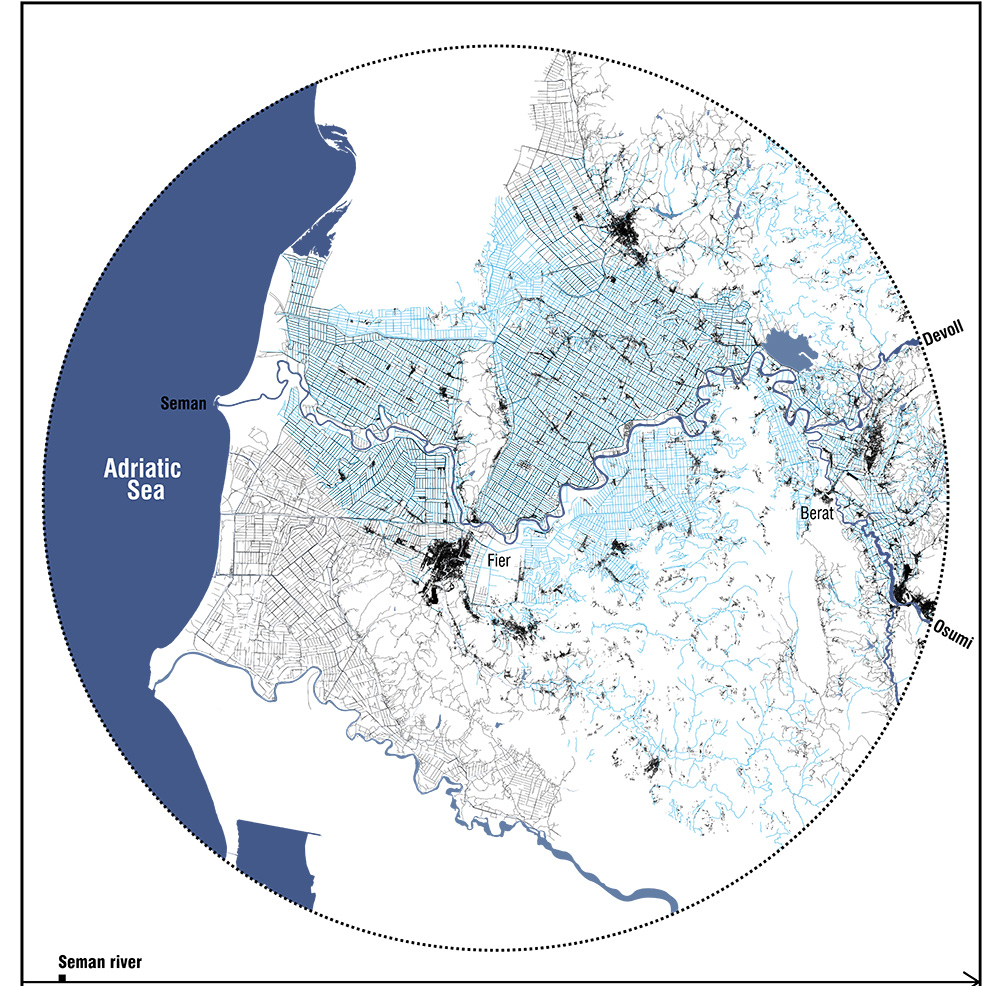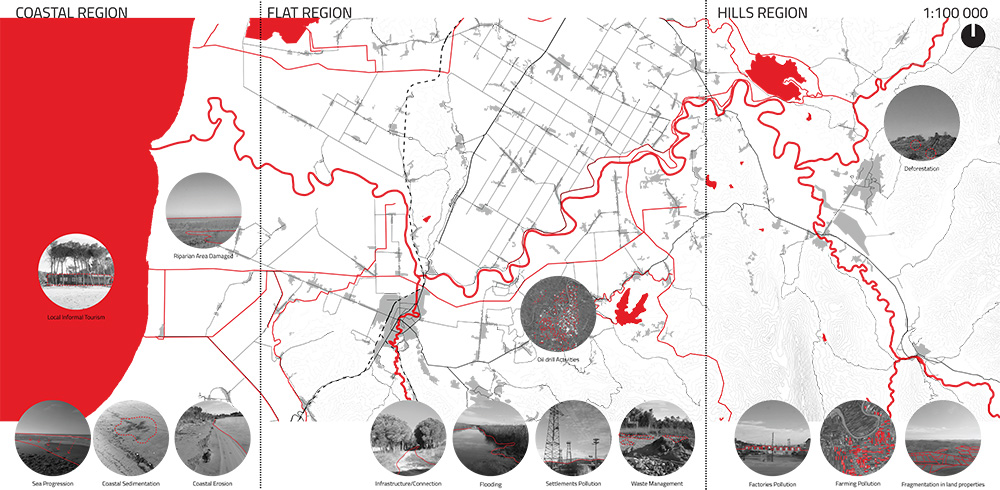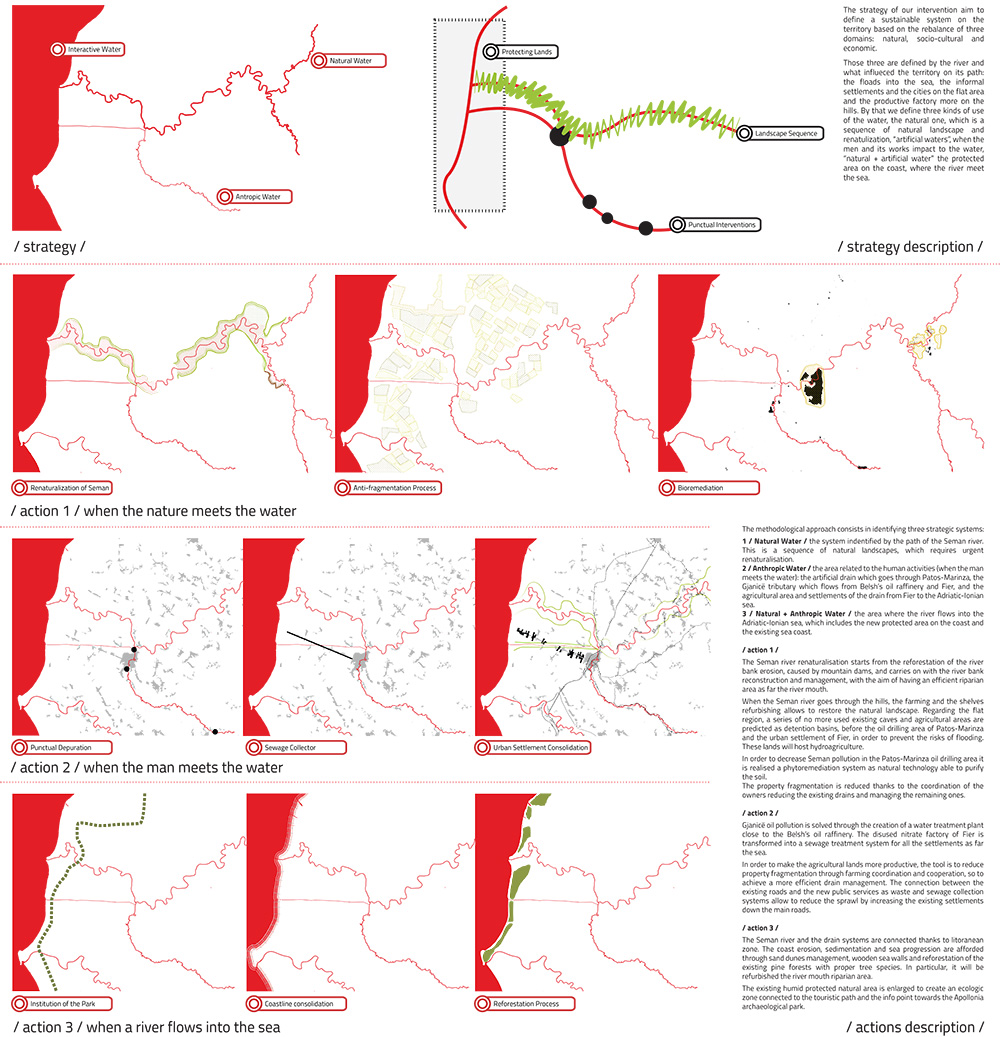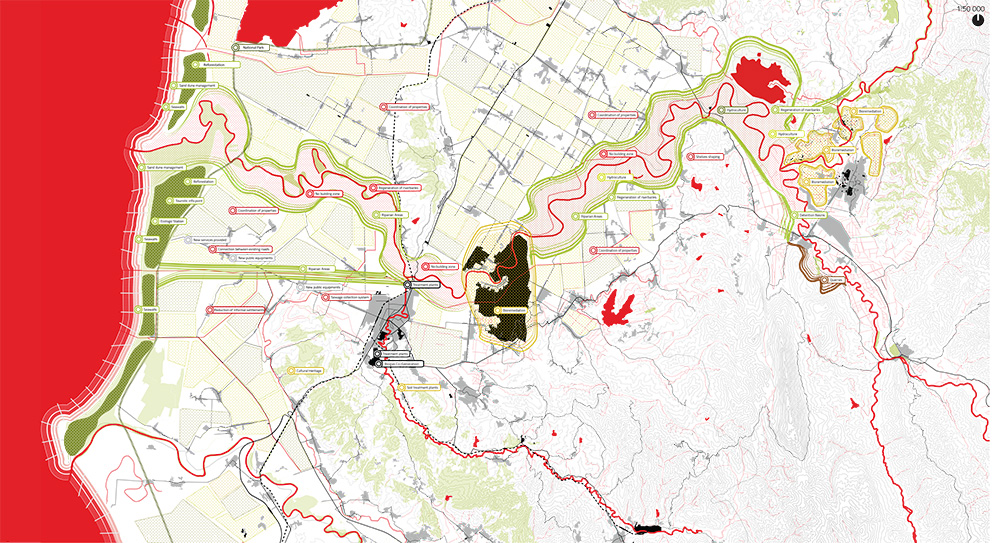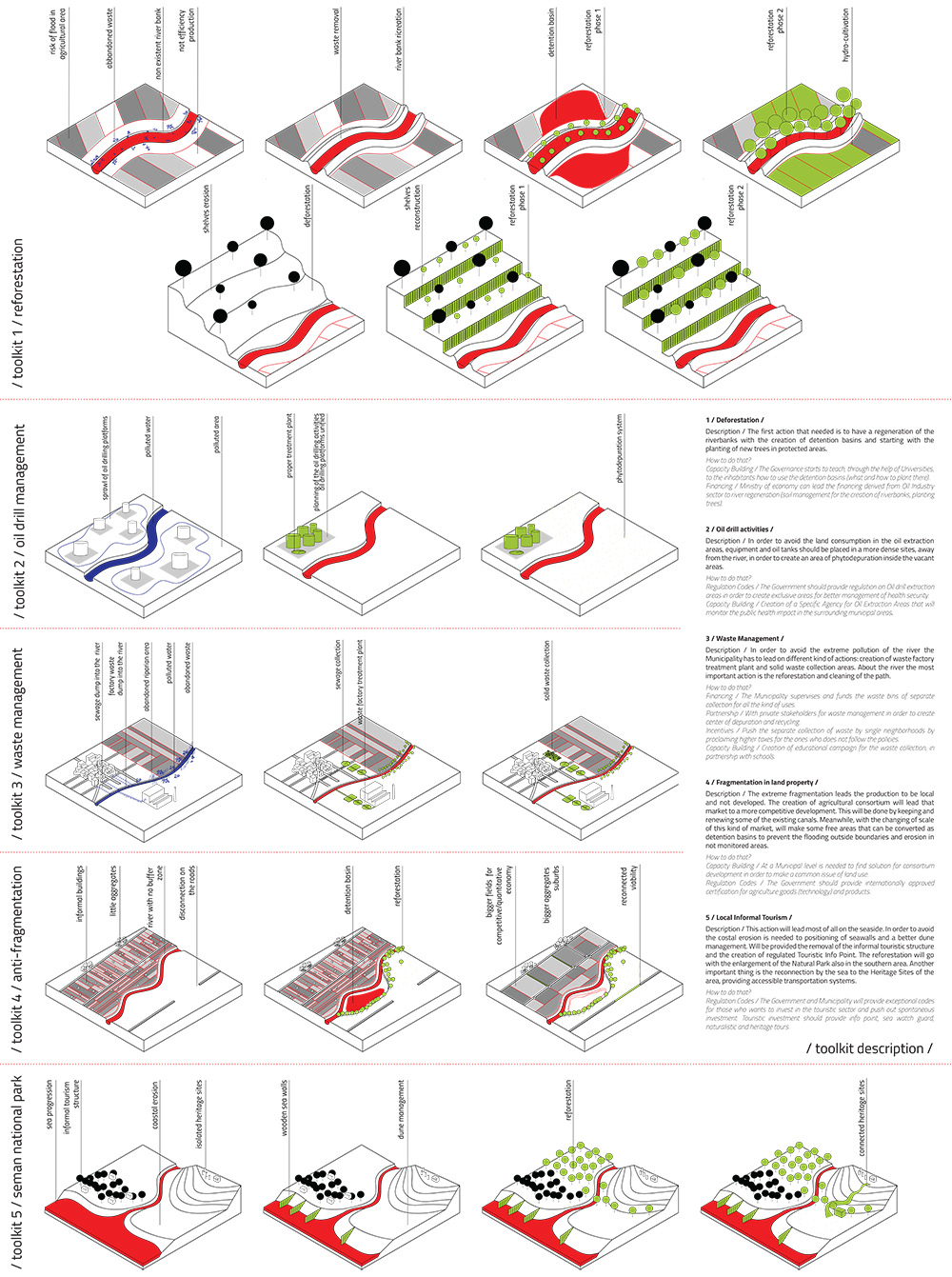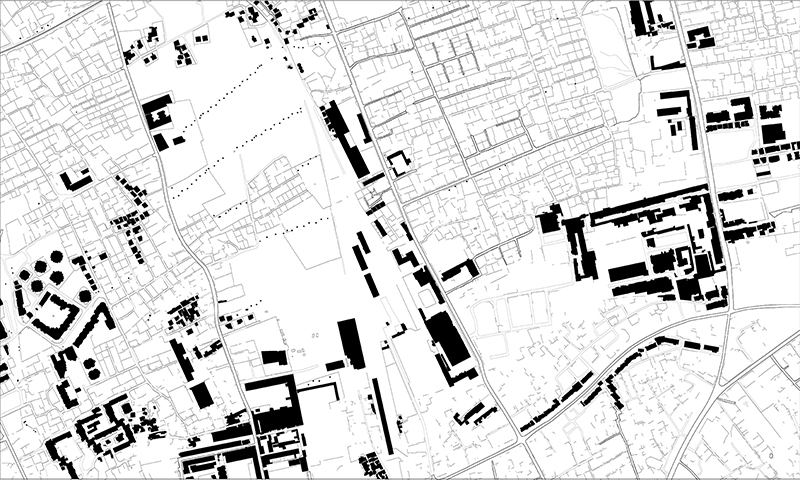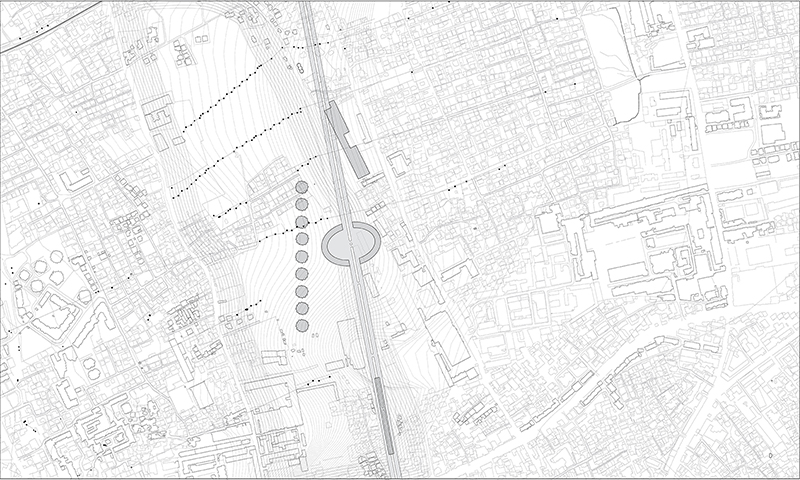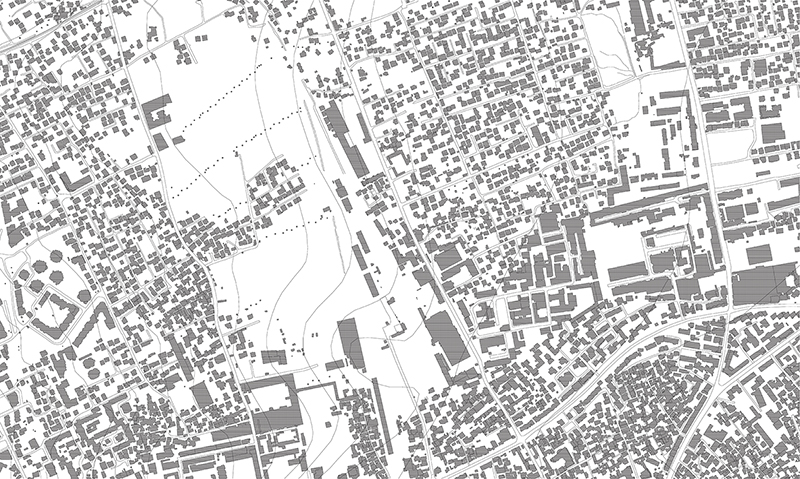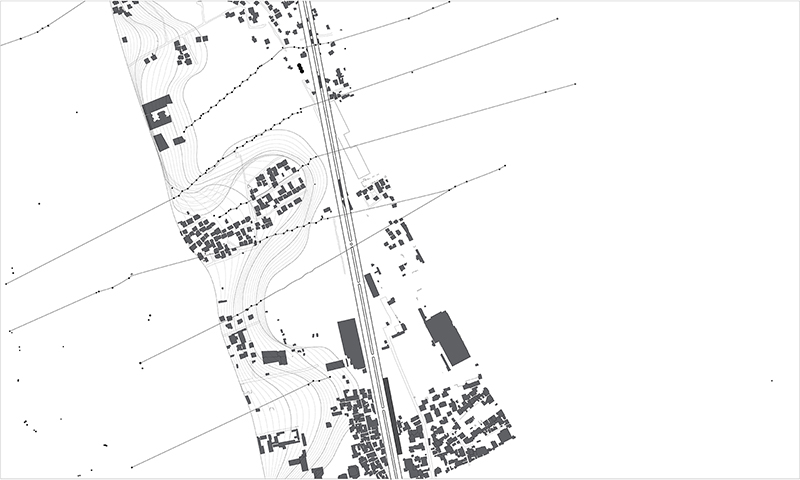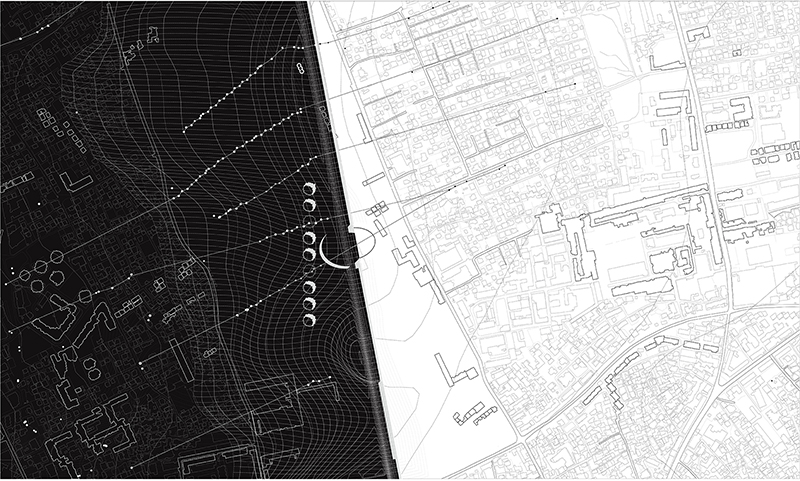Workshop
International Workshop Tirana Interrupted.
Department of Architecture and Urban Design School of Arts and Architecture University of California Los Angeles – UCLA 01/2015
POLIS University of Tirana, Architecture and Urban Design 09/2014
Leaded by Prof. Loris Rossi POLIS University of Tirana and Prof. Jason Payne UCLA Los Angeles
This workshop draws inspiration and structure from the 1978 exhibition Rome Interrupted: 12 Interventions on the Nolli Plan of Rome. That project imagined a renewed sense of faith in the urban plan as a site of coherence, a document that would promote, once again, some form of contractual obligation between design, politic, and form. Its visionary approach to urban design – a constellation of 12 works by key theorists of the city and its future – establishes it as a model to follow for current speculation on how designers might think through current problems and opportunities of the metropolis, and make new plans.
The city of Tirana, capital of Albania, is now positioned to benefit from a similar effort toward organizational redefinition after its 70 year-long meander through Cold War strangeness. In its current form the city barely holds together, a loose amalgamation of pre-Modern settlement, Italian city planning, communist-era discipline, and latter-day informal growth. This project speculates upon whatever coherence might be found across such disparate planimetric regimes and seeks to render it visible. Tirana, likely the most obscure (geographically and otherwise) European capital city finds itself free, finally, of past moorings and in a position to find its shape. A negotiation of current reality and possible new form, this workshop imagines how Tirana might move forward toward a plan uniquely its own.
This workshop is open to all A.UD students (all degree programs.) Enrollment is limited to 24 students (12 teams of 2.) A design charrette, students will work every day, Friday, January 23 through Friday, January 30, with a final review and discussion of work on Friday, January 30 followed by a reception and evening lecture by Professor Loris Rossi at 6:30pm in the DeCafe. (Notice written by Jason Payne)
The below images represent three different step addressed by the twelve groups of students: Tirana now; Tirana Hidden Frame; Tirana in the future.

The experiment Tirana Interrupted has been develop in two University, the first in Tirana at POLIS University during the Tirana Architecture Week on 09/2014; the second, above mentioned, at UCLA Los Angeles on 01/2015.
For more info you can download the Workshop Booklet
Banner Tirana workshop
Banner Los Angeles Workshop
LISTEN MY OPEN LECTURE AT UCLA
Below the twelve quadrants interpreted by the twelve students:
Quadrant n°1 - PEREZ
PROCESS
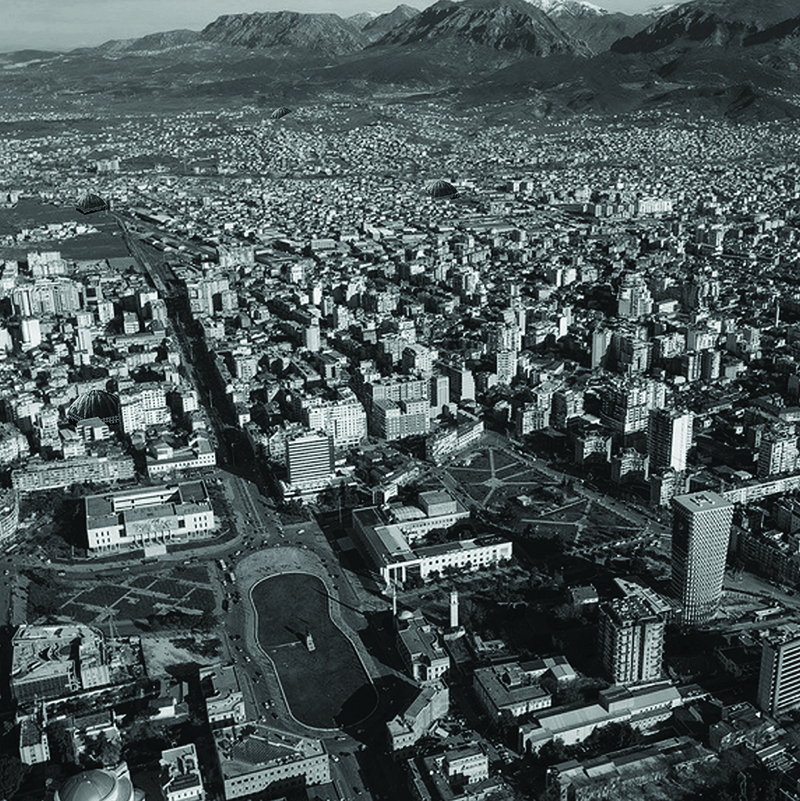
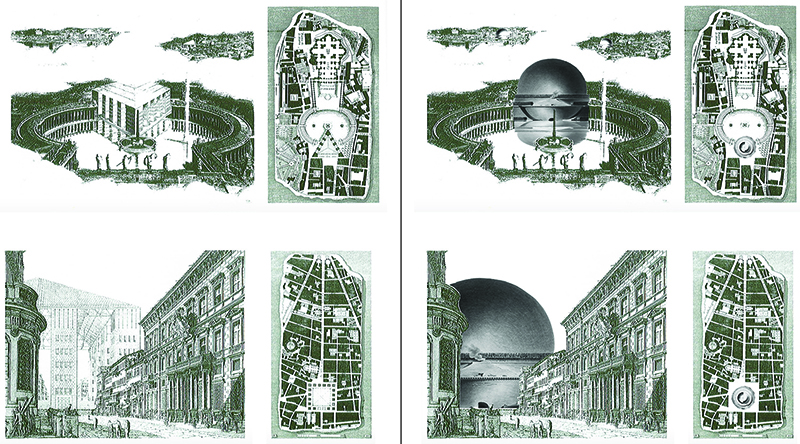


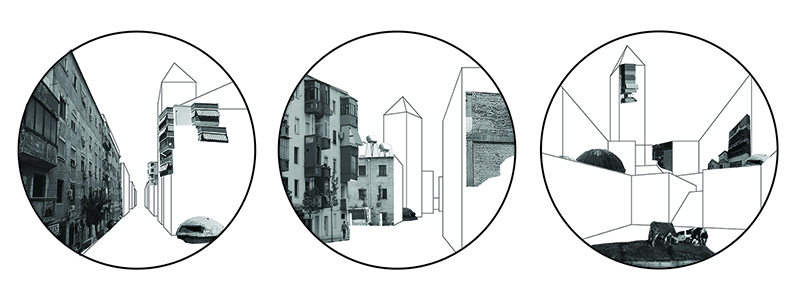
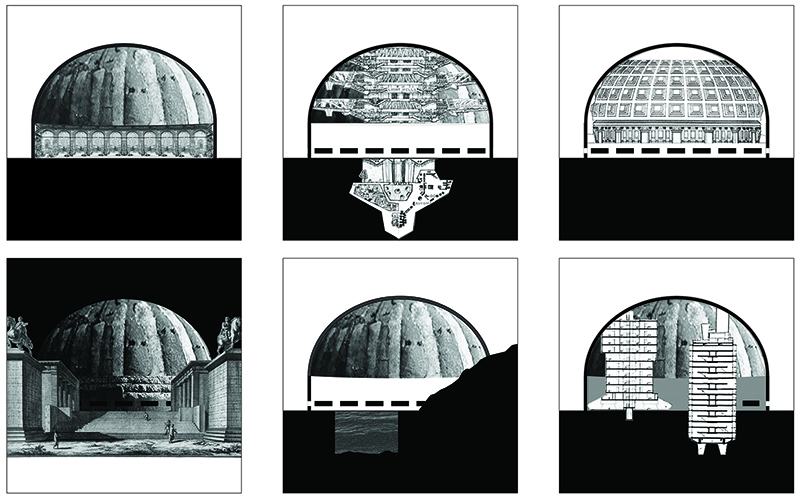
TIRANA NOW QUADRANT n°1
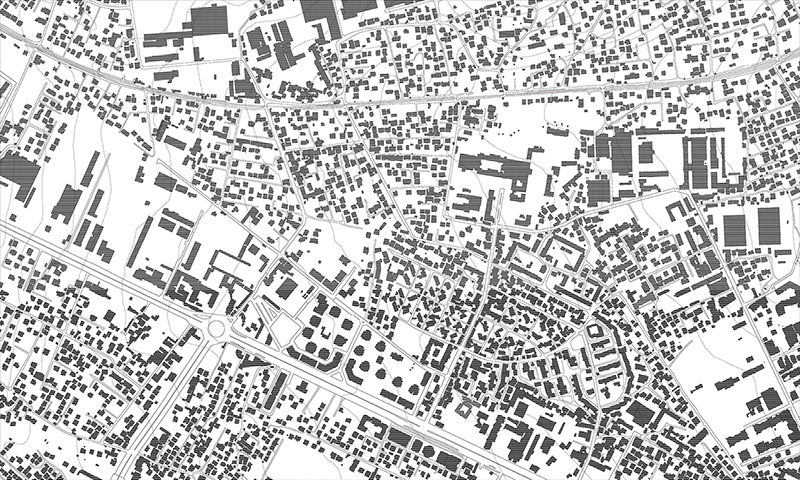
TIRANA HIDDEN FRAME
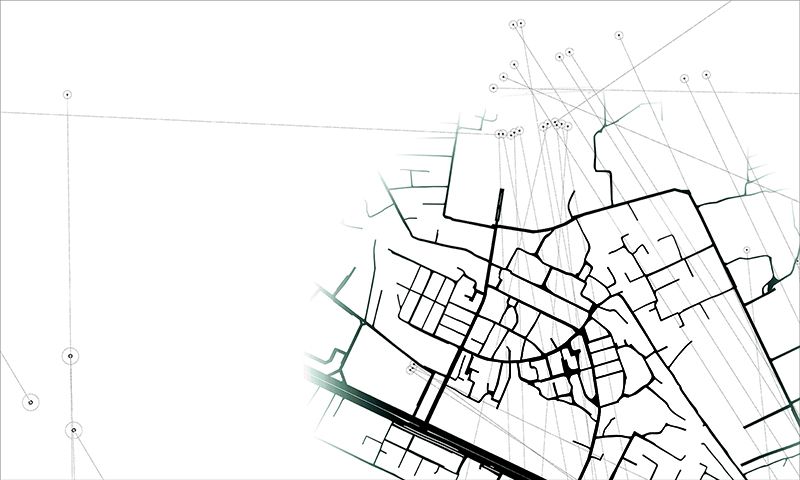
TIRANA FUTURE
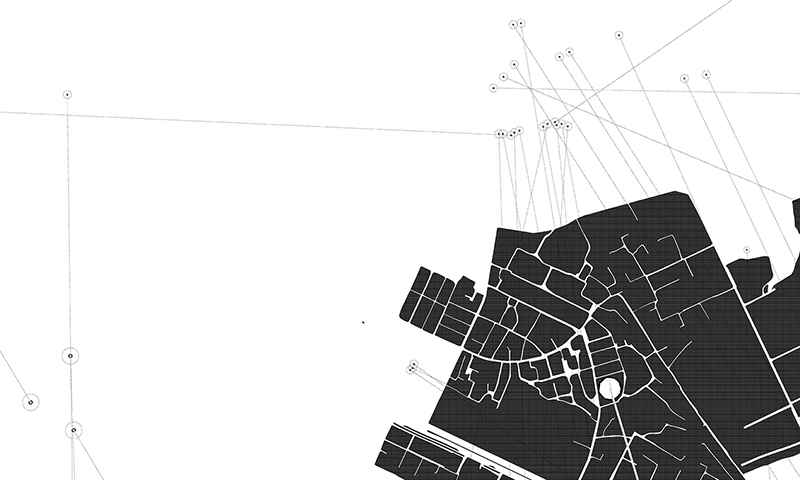
Quadrant n°3 - MARTINEZ & FIRMALINO
PROCESS
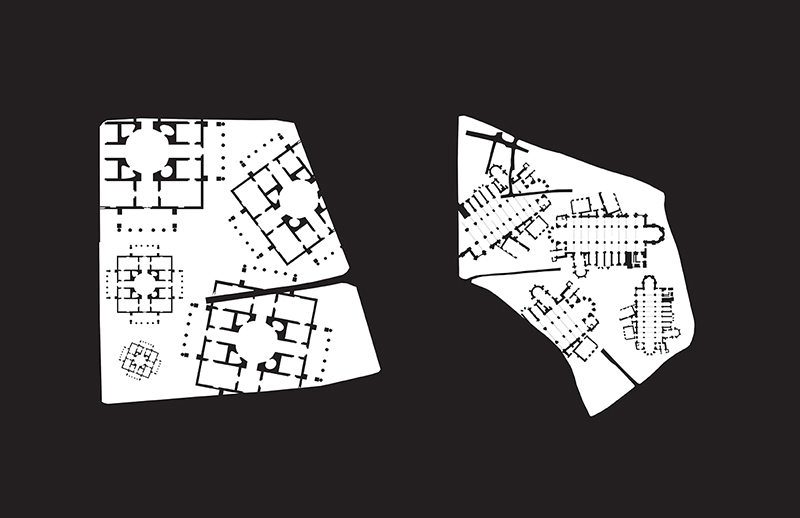
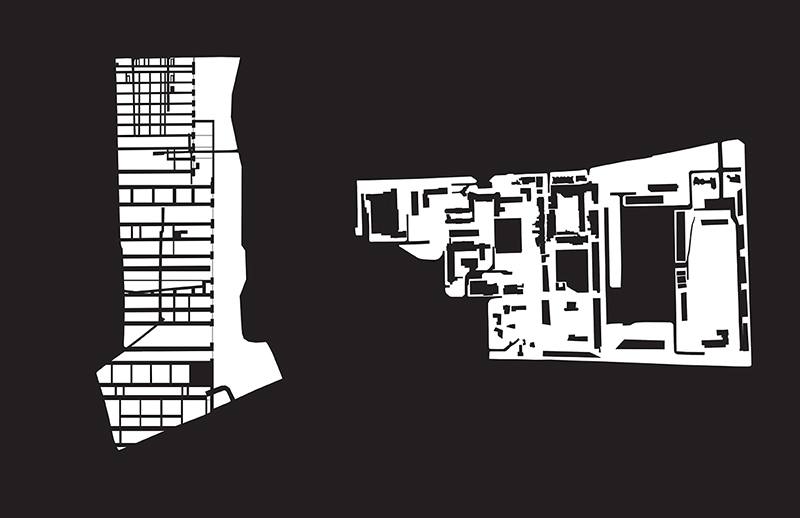
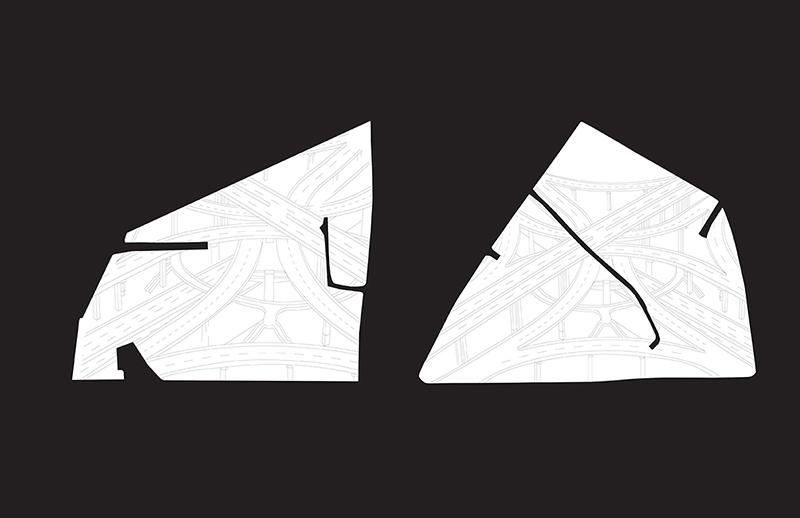
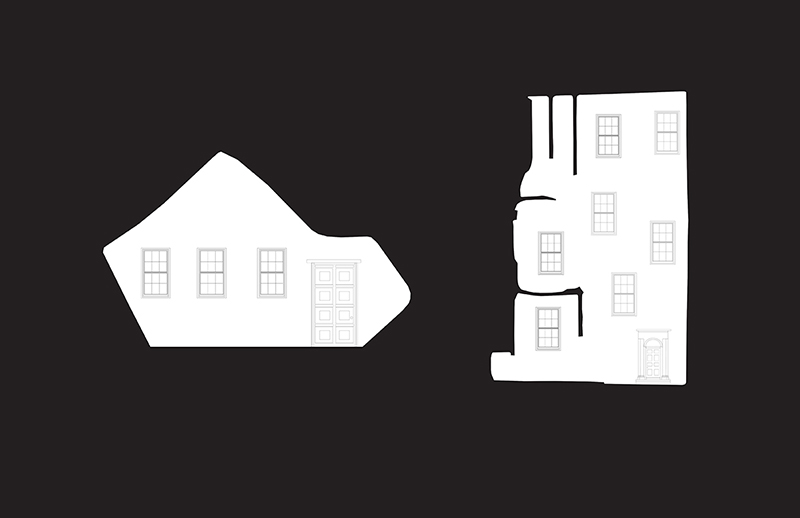
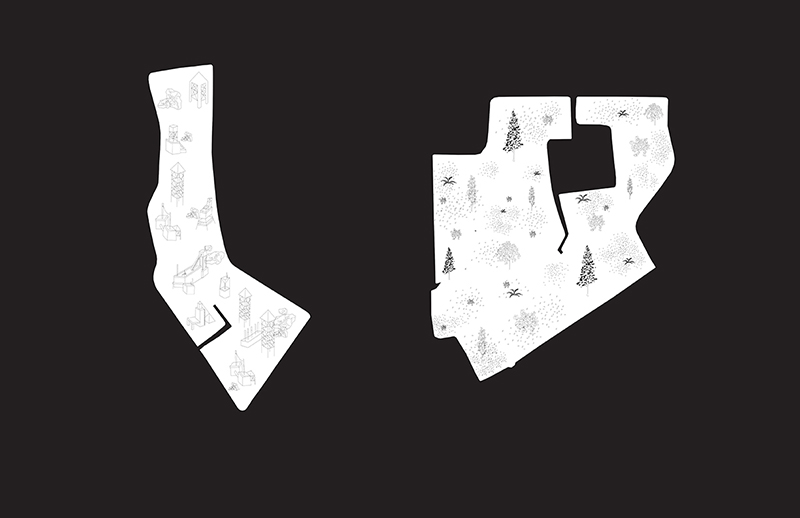
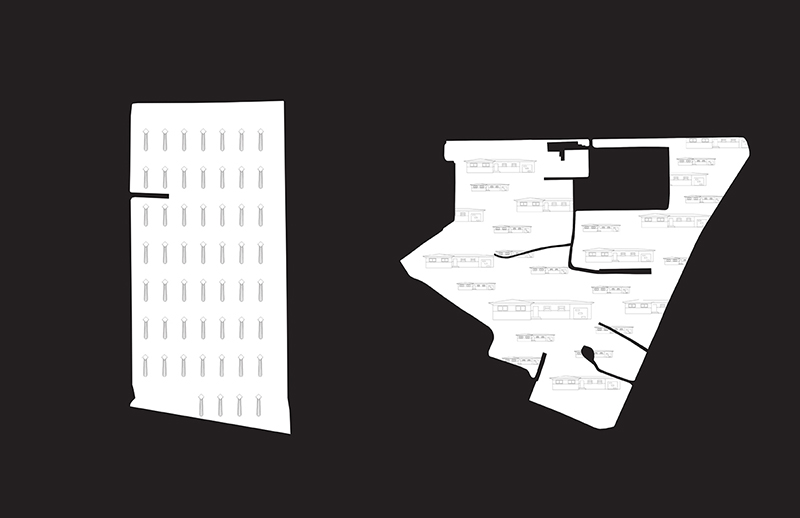
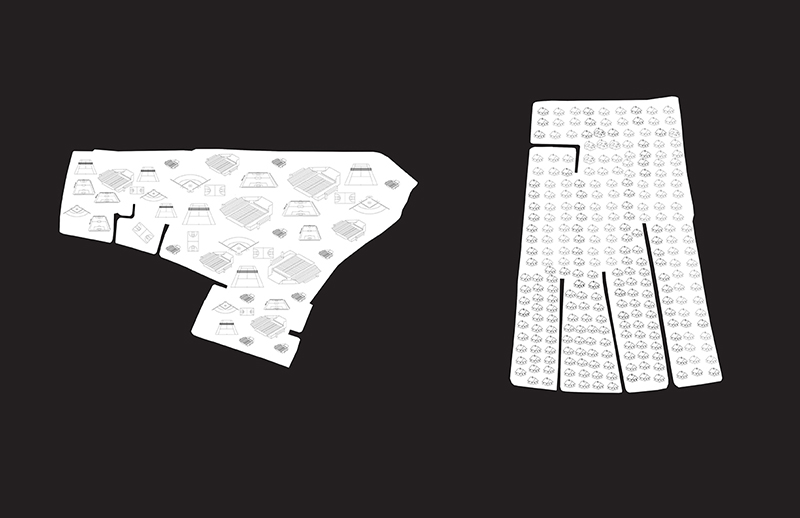
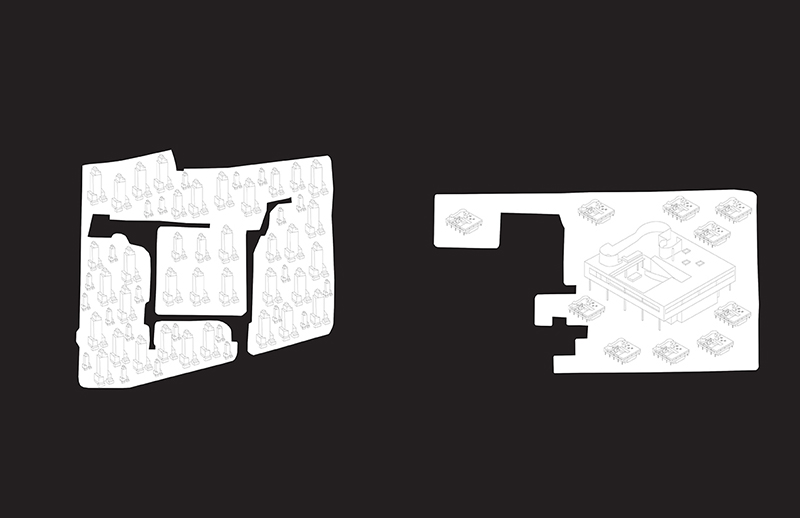
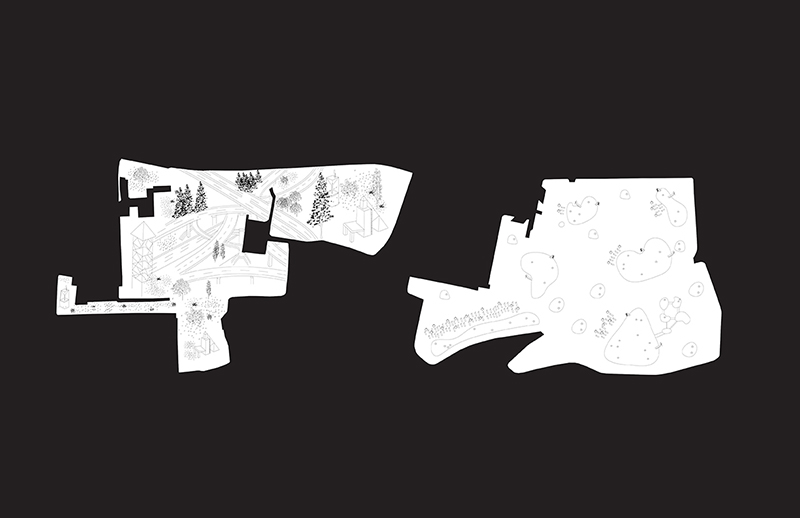
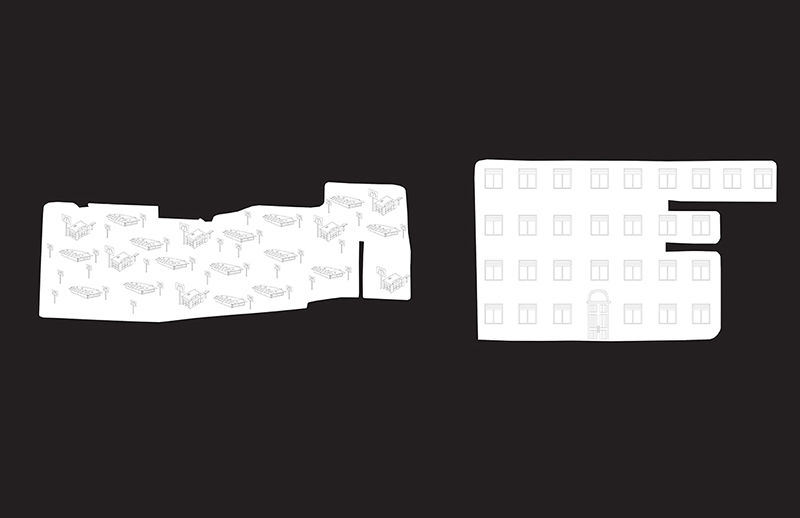
TIRANA NOW QUADRANT n°3
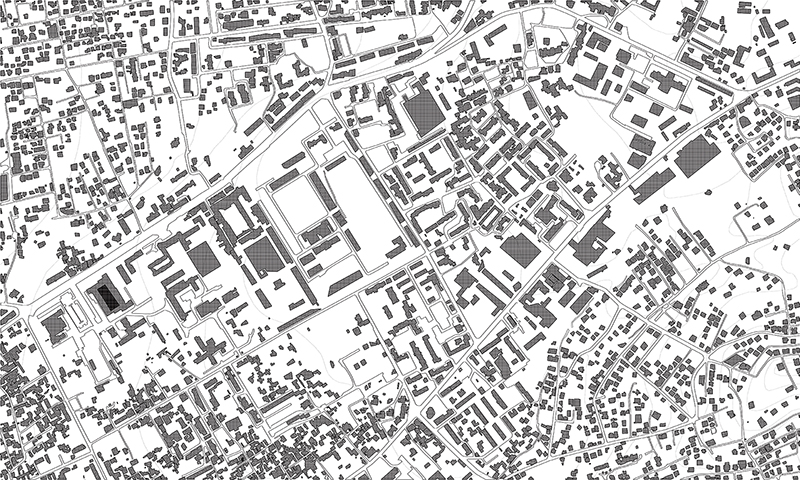
TIRANA HIDDEN FRAME
![TIRANA_Hidden_Martinez[Converted]](https://www.lorisrossi.com/wp-content/uploads/2015/01/3-TIRANA_Hidden_MartinezConverted.jpg)
TIRANA FUTURE
![Final_Tirana_Martinez [Converted]](https://www.lorisrossi.com/wp-content/uploads/2015/01/3-Final_Tirana_Martinez-Converted.jpg)
Quadrant n°4 - PIRACHA
PROCESS
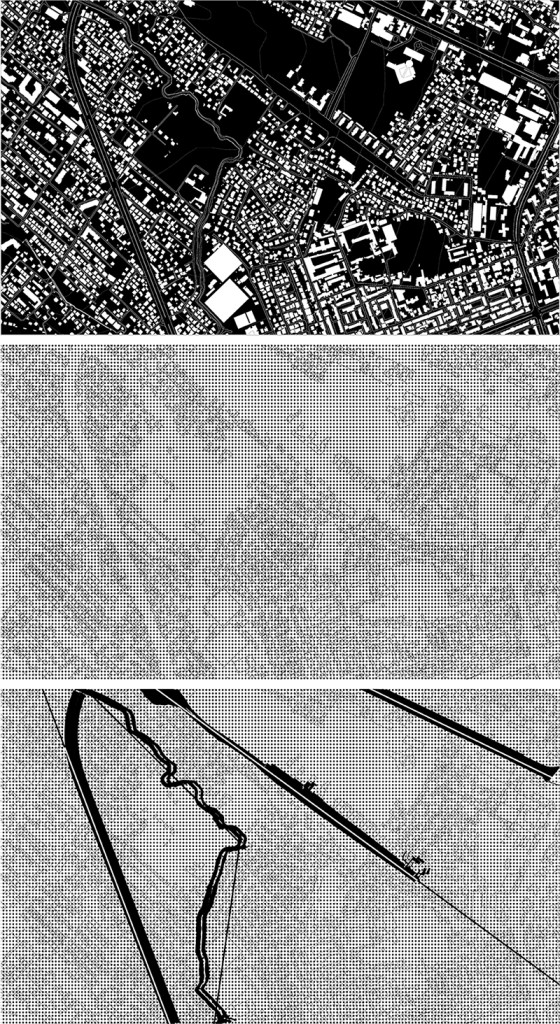
TIRANA NOW QUADRANT n°4
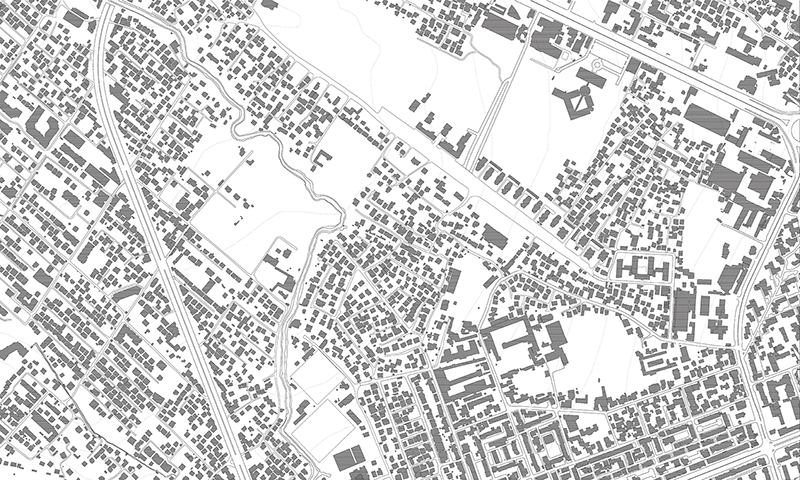
TIRANA HIDDEN FRAME
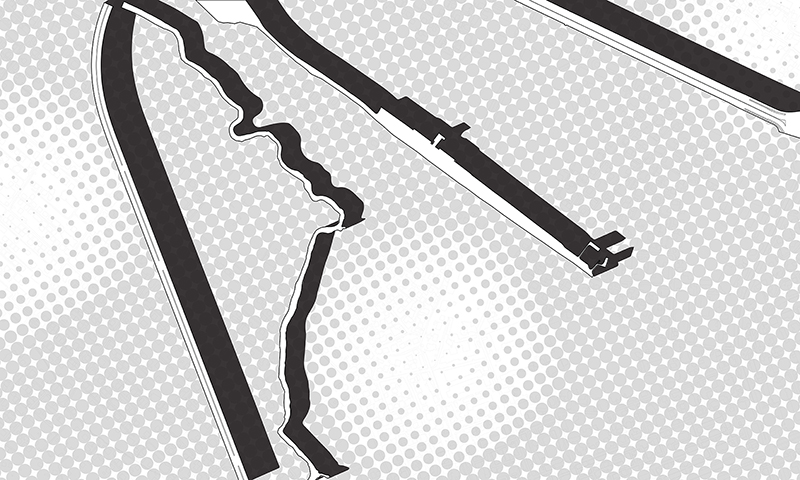
TIRANA FUTURE
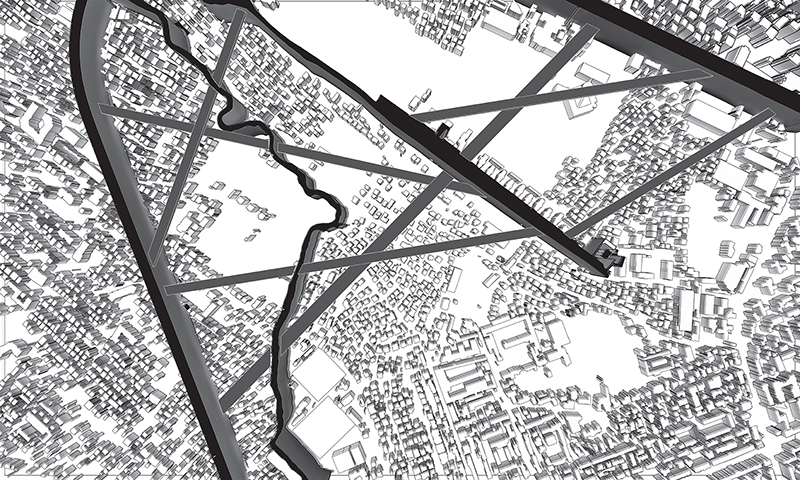
Quadrant n°5 - GONZALEZ
TIRANA NOW QUADRANT n°5
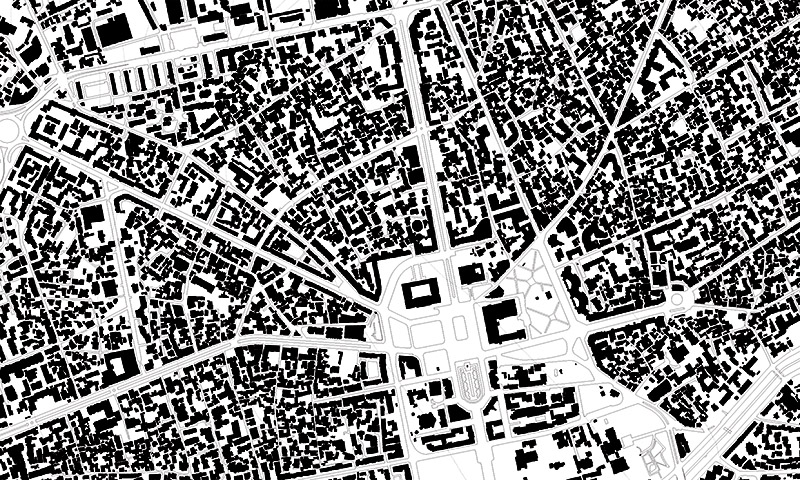
TIRANA HIDDEN FRAME
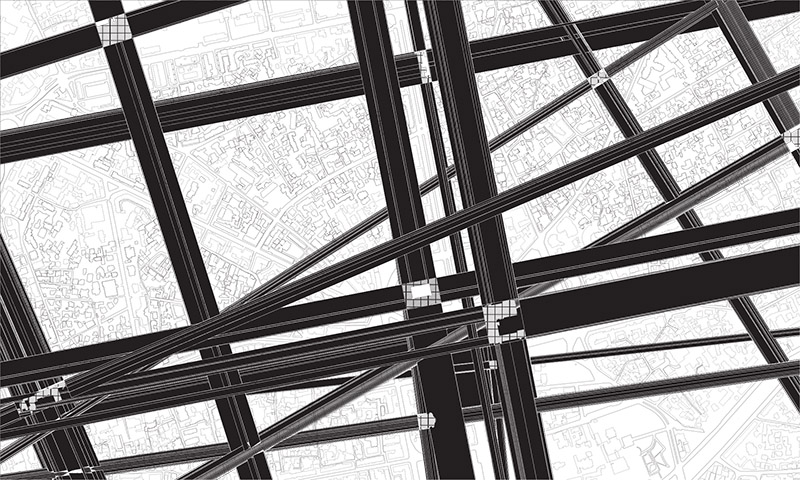
TIRANA FUTURE

Quadrant n°6 - BRANAS
TIRANA NOW QUADRANT n°6
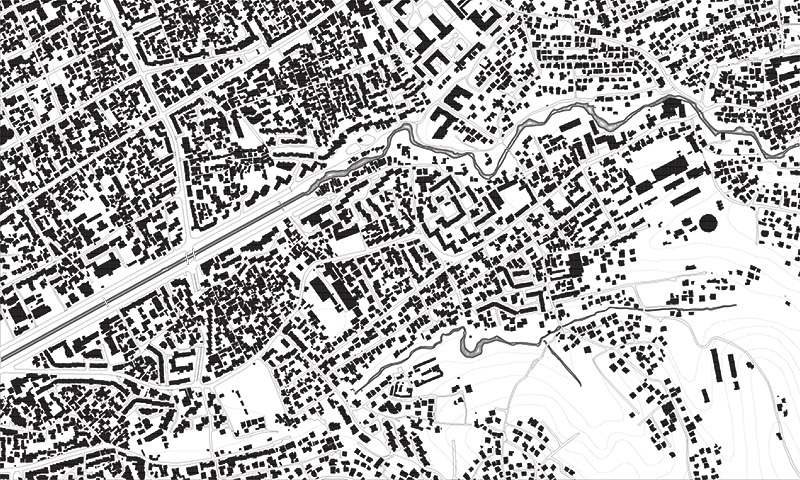
TIRANA HIDDEN FRAME
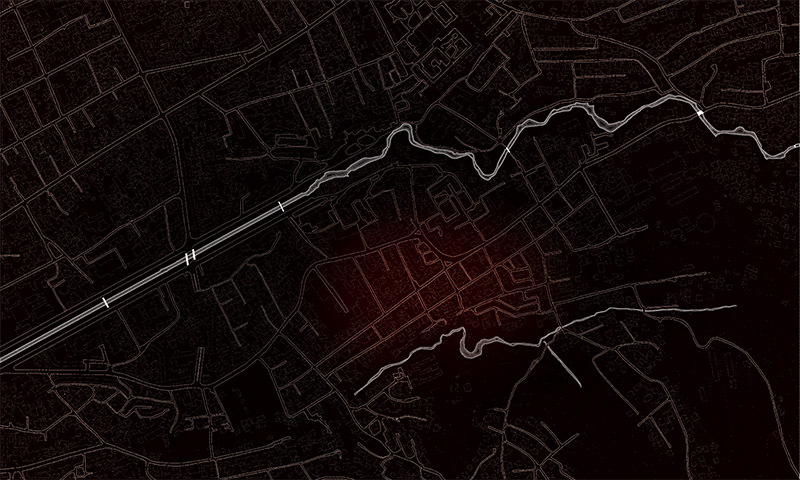
TIRANA FUTURE
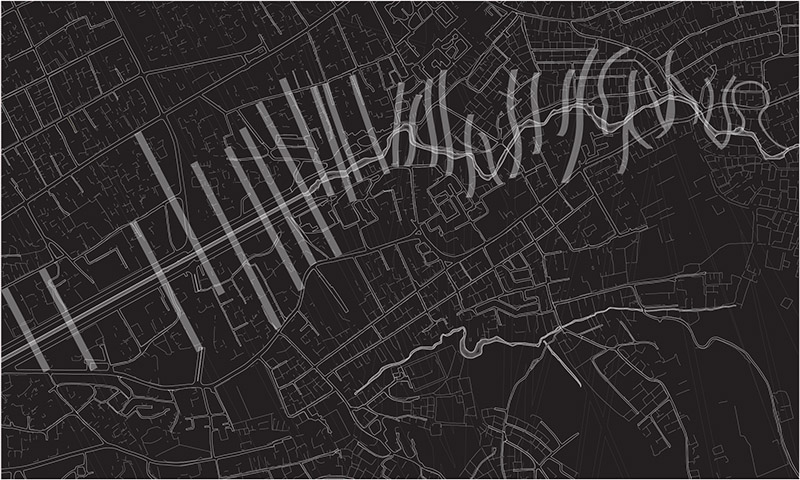
Quadrant n°7 - FORNEY
PROCESS
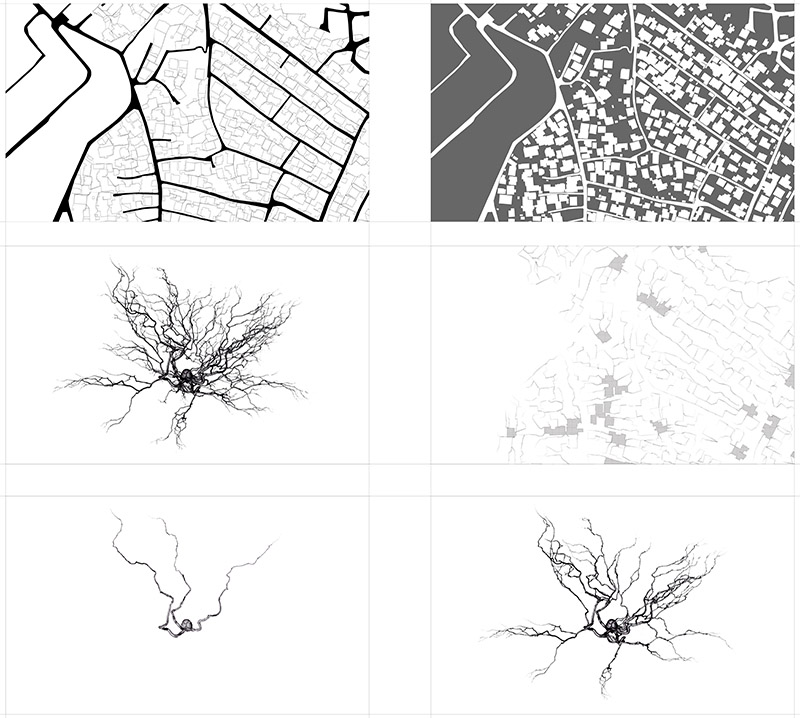
TIRANA NOW QUADRANT n°7
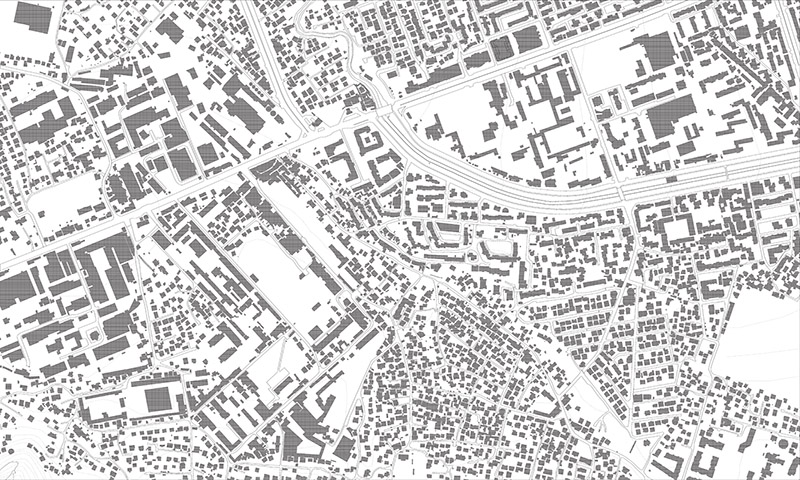
TIRANA HIDDEN FRAME
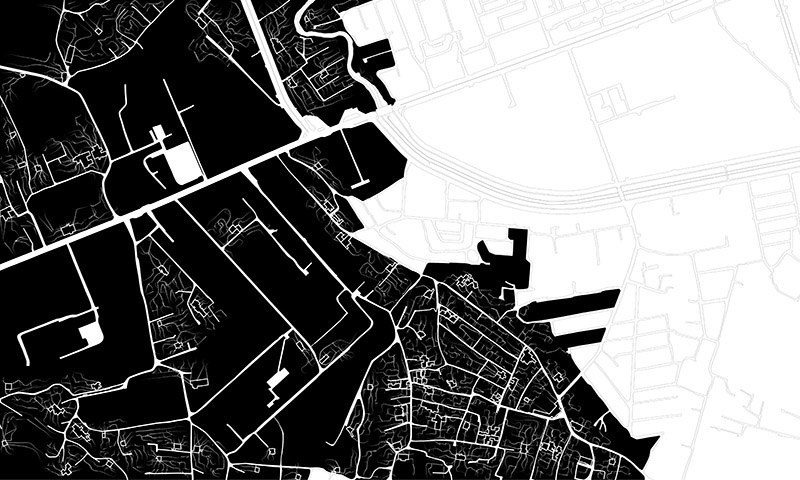
TIRANA FUTURE
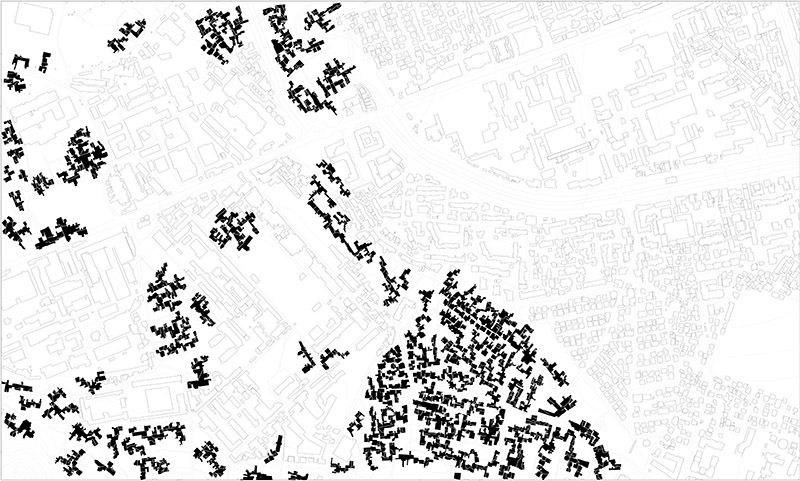
Quadrant n°8 - WOODS
TIRANA NOW QUADRANT n°8
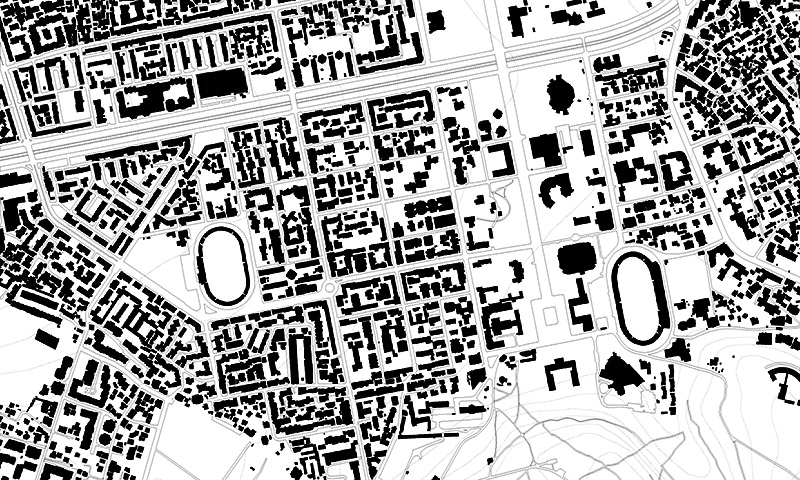
TIRANA HIDDEN FRAME
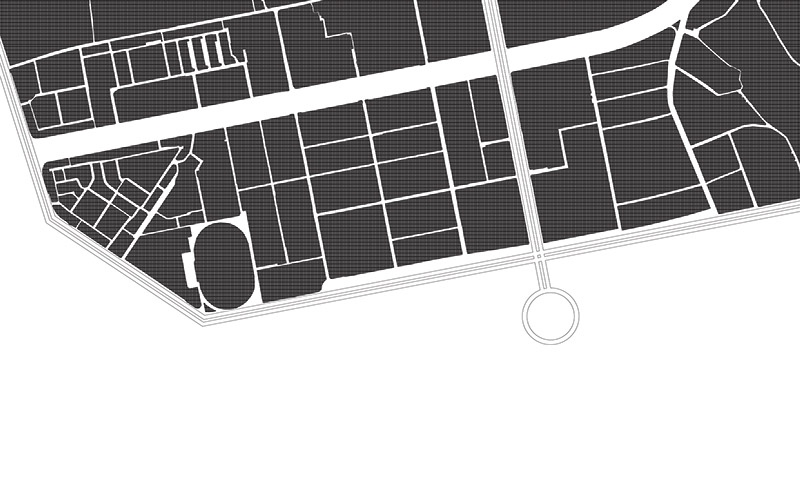
TIRANA FUTURE
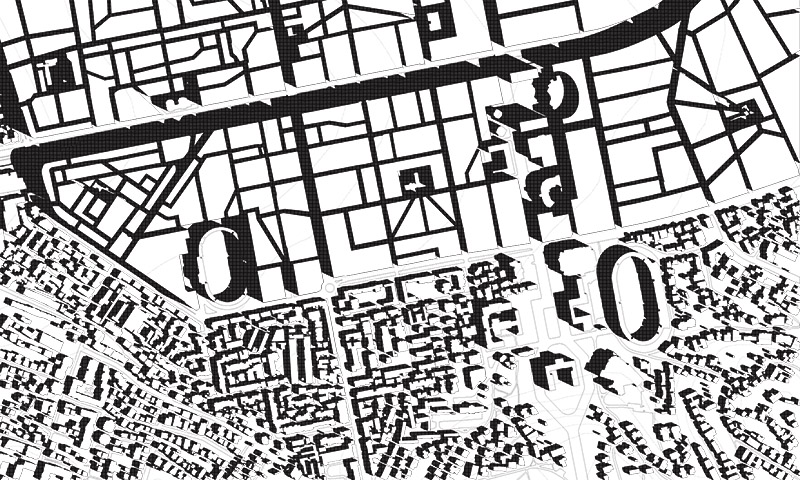
Quadrant n°9 - OLUFOWOSHE
PROCESS
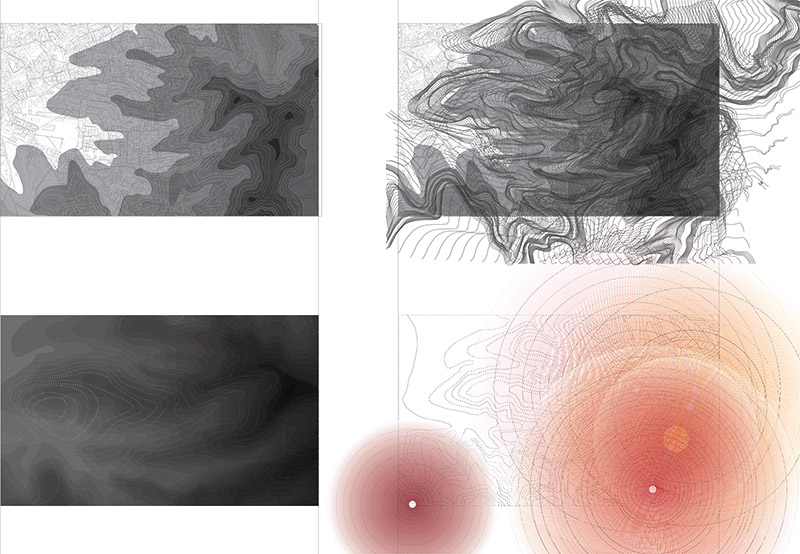
TIRANA NOW QUADRANT n°9
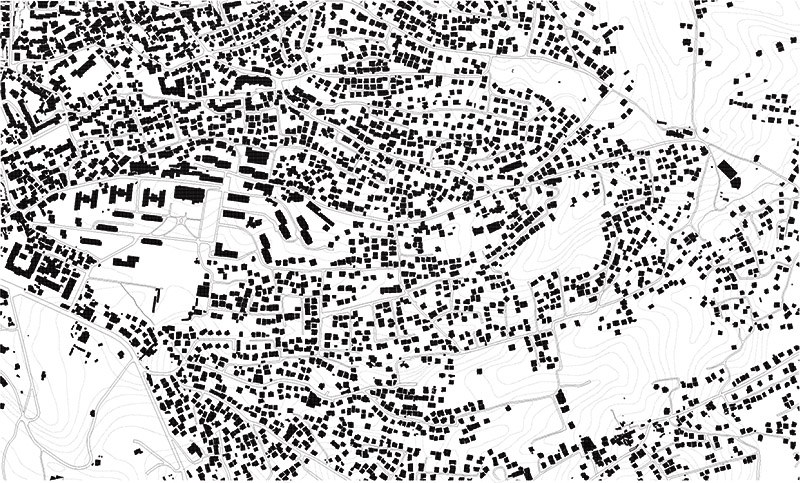
TIRANA HIDDEN FRAME
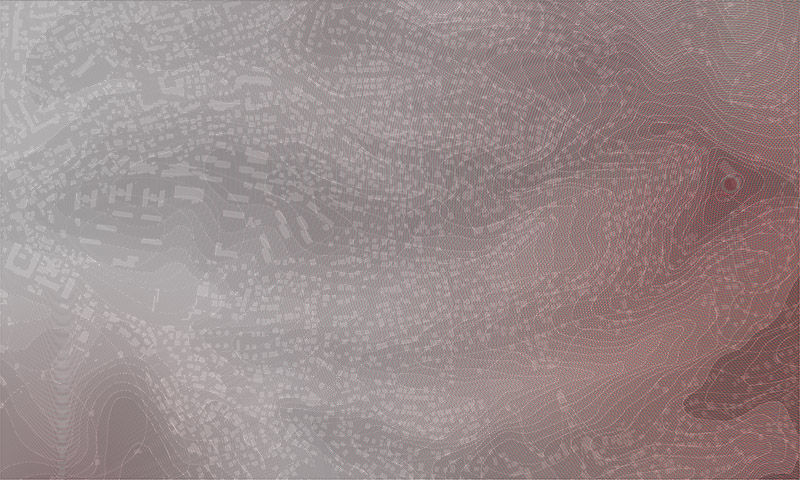
TIRANA FUTURE
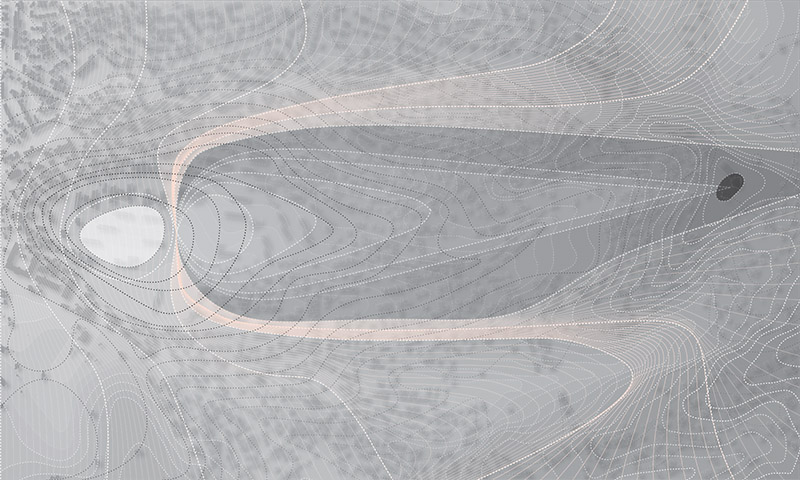
Quadrant n°10 - YAU
PROCESS
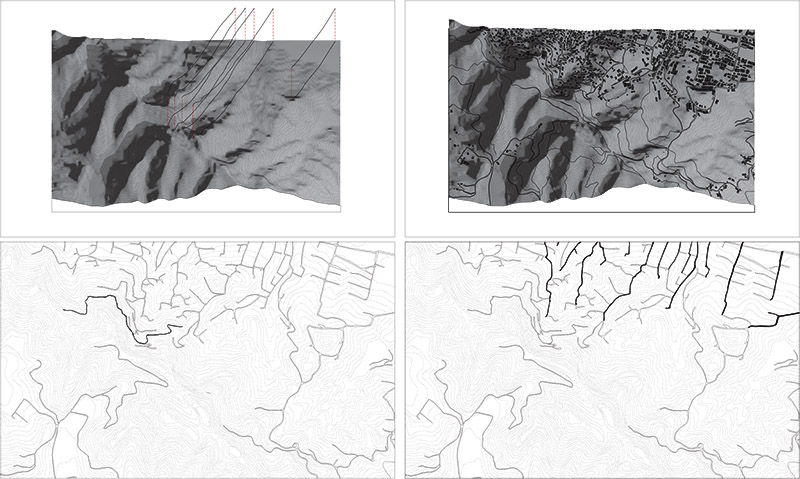
TIRANA NOW QUADRANT n°10
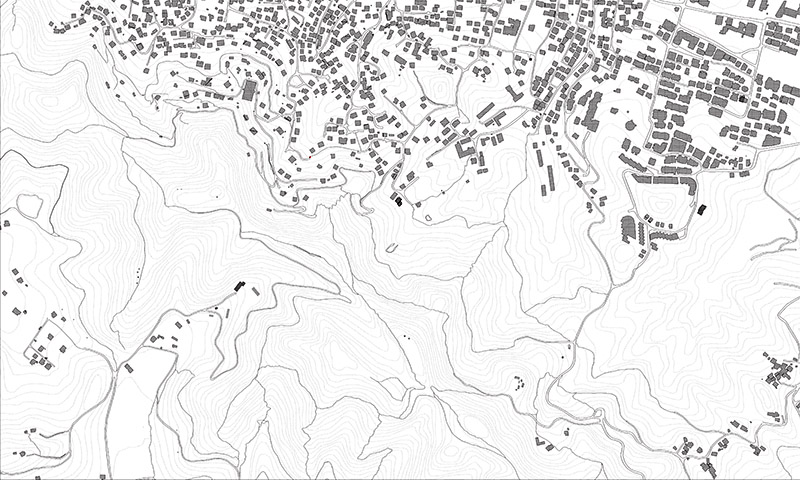
TIRANA HIDDEN FRAME
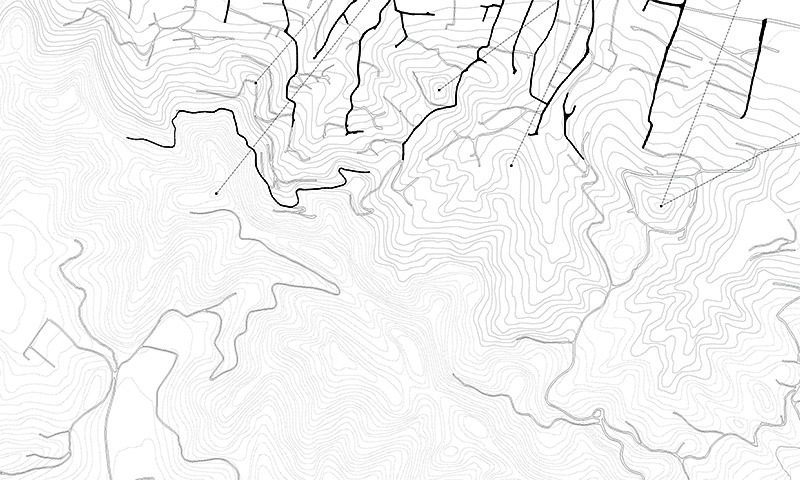
TIRANA FUTURE
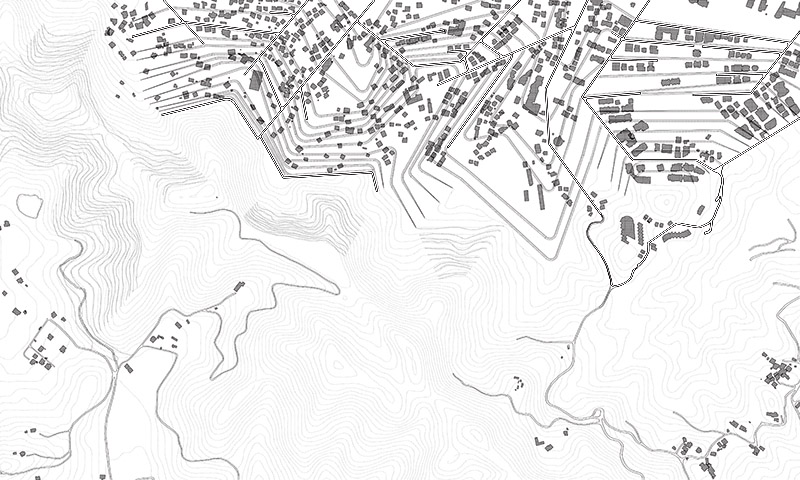
Quadrant n°11 - KAA & STEINHAGEN
TIRANA NOW QUADRANT n°11
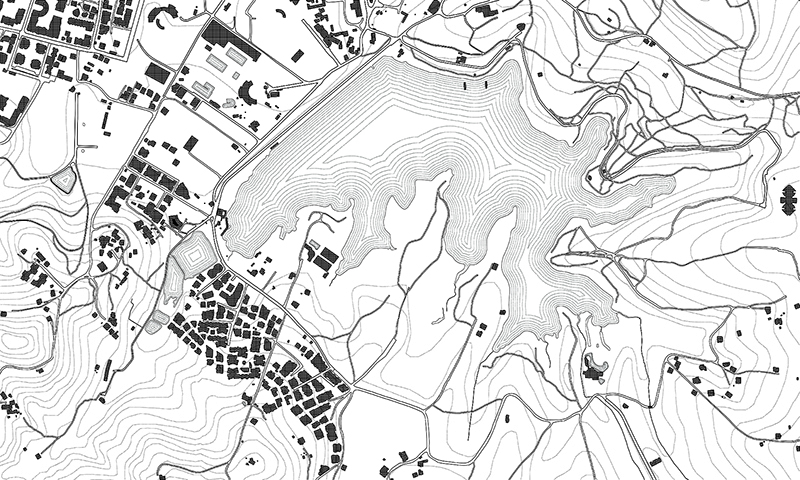
TIRANA HIDDEN FRAME
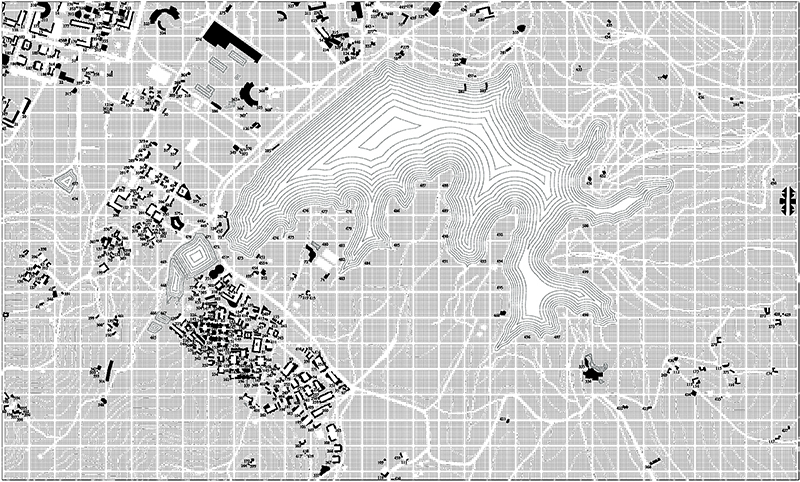
TIRANA FUTURE
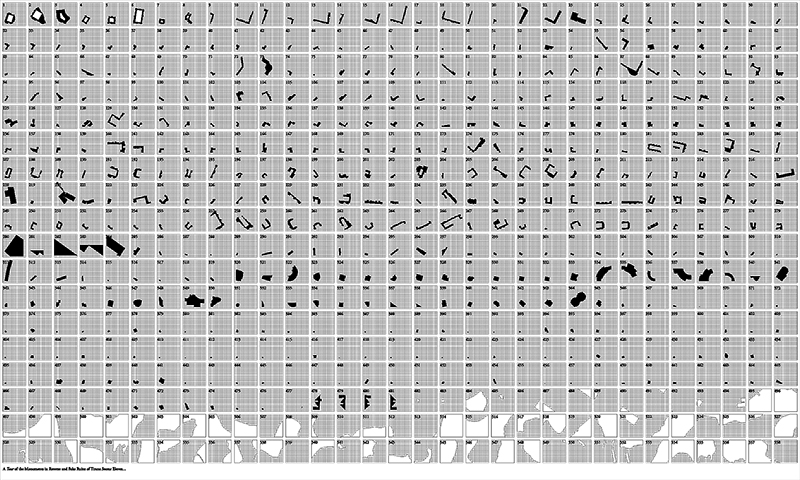
Quadrant n°12 - JOHNSON
TIRANA NOW QUADRANT n°12
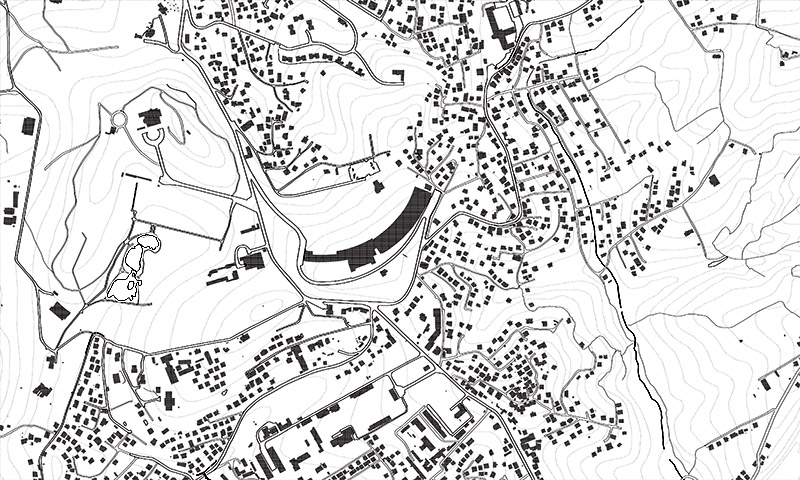
TIRANA HIDDEN FRAME
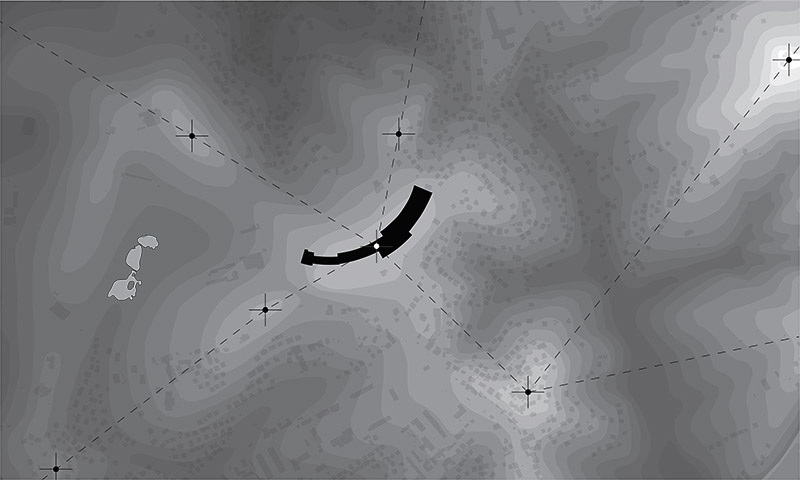
TIRANA FUTURE
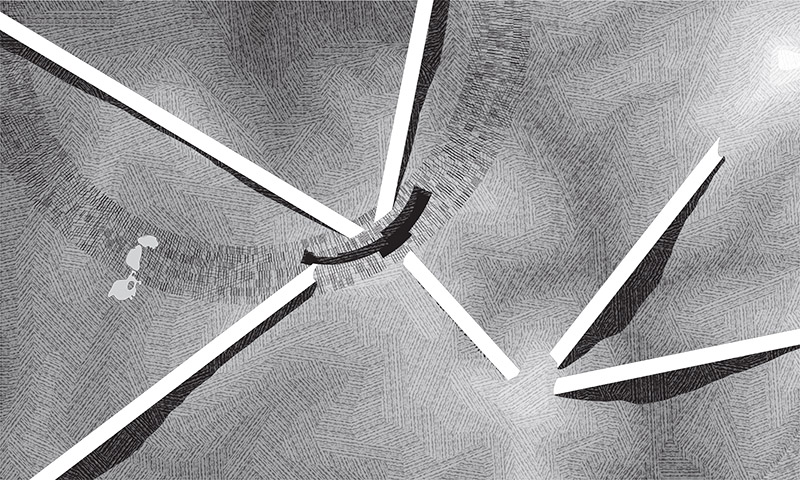
Viral Ecologies | The creation of a new image for the city of Tirana. An International Workshop POLIS University | The University of Tokyo.
Lead by: Professor Kengo Kuma
Tutor: Ass. Prof. Ko Nakamura, Phd Loris Rossi, Phd Cristiano Lippa, Nikola Nikolovski.
Assistant: Dorina Papa
Period: 19 -26 September 2013
With the participation of: POLIS University students of 5rd, Faculty of Architecture and Design. Tokyo University students.
The main goal of the workshop was to provide operative tools able to activate repeatable strategies in the urban context of Tirana. The spontaneous relationship between uncontrolled development and human activity has generated the idea of this workshop: Viral Ecology is an alternative and provocative way to see the actual condition of the city.
The viral concept shows how specific infective elements, apparently insignificant, but with a strong capacity to generate operative tools, can exist in the urban settlement. The creation of a new image for Tirana should be considered as a new possible scenario capable of connecting tradition and reinterpretation between the urban and the architectural scale.
This scenario will constitute a new urban ecology since it will propose new relationships between human activities and the constructed environment. Its characteristic is to be viral, hence easily spread.
Confronting the Japanese approach with Tirana’s reality and informality demonstrated how different methodologies can contribute to the definition of specific tools. The Japanese experience, the way architects and planners interpret the relationship between elements and activities, became an operative tool to manage the multi-layered characteristic of Tirana, following a bottom up approach.
The project area was located between Tirana Rinas Airport and the city. A wide area still undergoing development with a strong informal component and with an interesting differentiation of land use. One of the main objectives of the workshop was the definition of common elements, spontaneous events with peculiar characteristics. This elements were meant to become the base of the strategies operated on both the urban and the architectural scale. A process that, starting from the observation of a spontaneous phenomenon, tries to exploit its potentially positive elements, to create a new model for the city.
The differences and the repetitions, as mentioned in the heading of a book by Gilles Deluze, are here considered as part of a creative process already present in Tirana’s urban settlements but not yet discovered.
The starting point of the organization of the workshop was the site visit. All the students, POLIS and Tokyo University, divided in groups started to read the existing situation and to collect operative keyword in order to classify common elements present in the project area. During the second step of the workshop there was an open debate, from which five main categories emerged:
Limits – Borders
Public Space – Private Space
Orientation – Sense of community
Water – River – Channels
Access – Connections
Those categories were not just simple keyword, but viral repetitions in Tirana’s context. The important thing in this process was to stimulate students’ capacity to discover hidden layers in the familiar informal condition and to see them as repeatable differences.
The five work groups were composed by Japanese and Albanian students. For all the groups a conceptual matrix was built by the tutors in order to guide them and better develop the final outcome of the workshop, which consisted in two A1panels. The contents of the panels were the following:
Scenario: The idea of scenario was to identify and define within the area a specific environment characterized by a typical condition in the existing urban context. Considering the vastness of the project area it was crucial to find the right tools to approach such scale.

Below the students elaborations:
Limits - Borders
Students: Yusuka Izumi, Desian Dyrmishi, Gleidis Misja
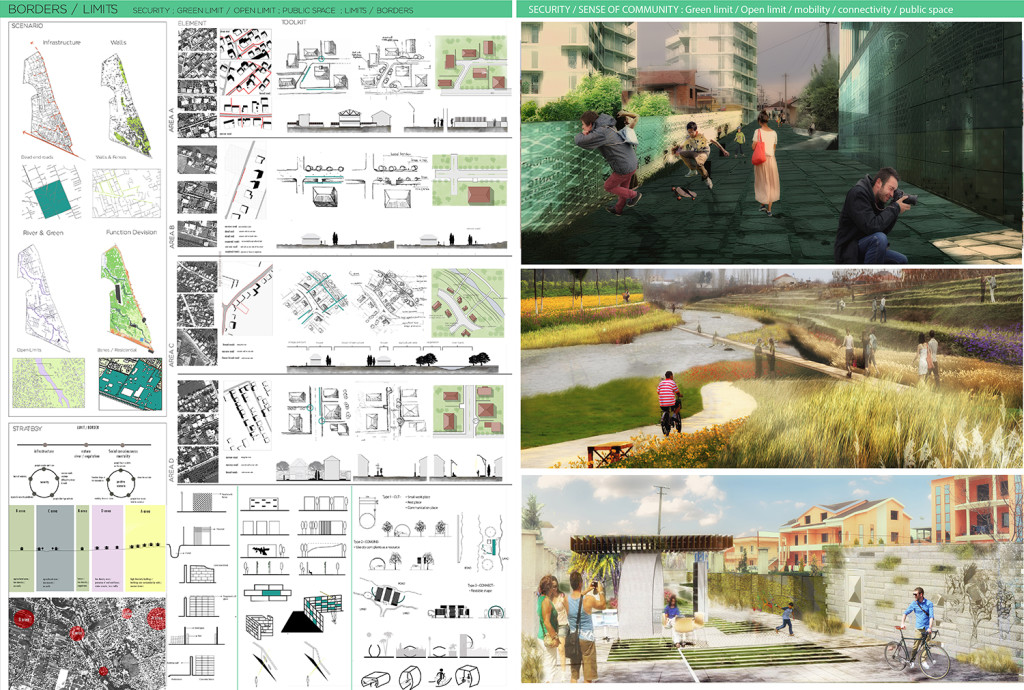
Public Space - Private Space
Students: Egla Harxhi, Mitsuhiro Sekiya, Seiyo Warita, Sonila Brahollari
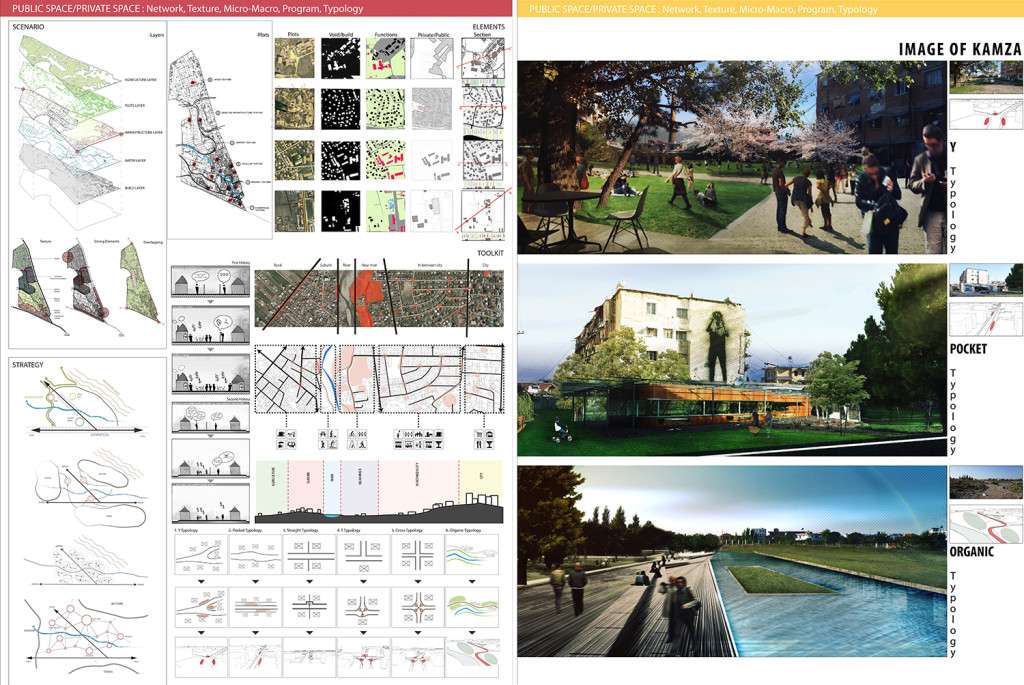
Orientation - Sense of community
Students: Nanami Kawashima, Gerdi Papa, Emel Peterci
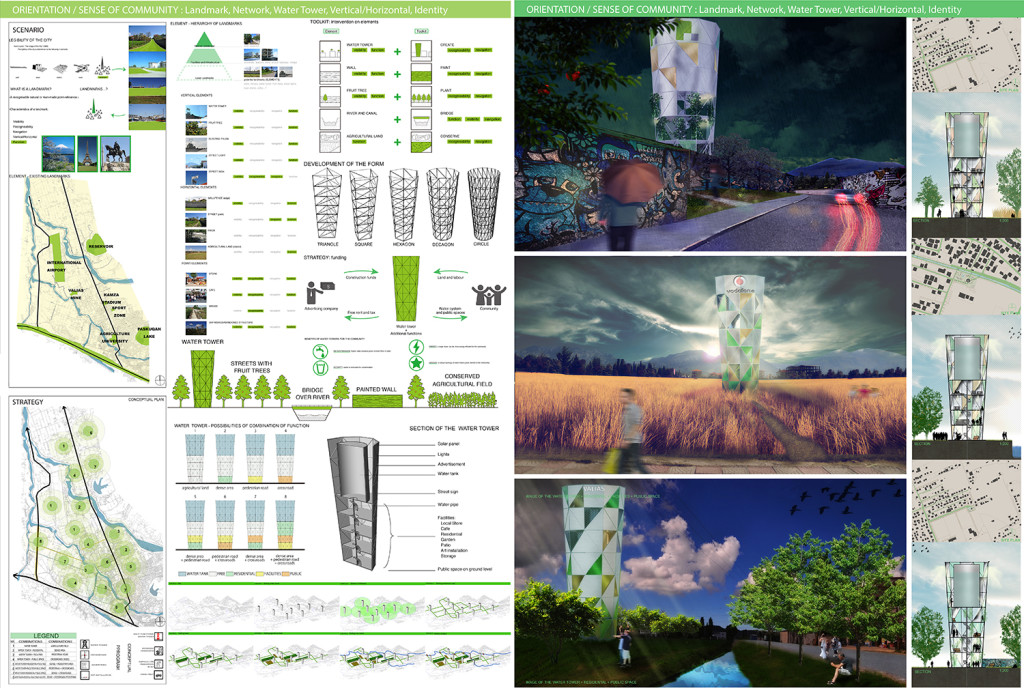
Water - River - Channels
Students: Dea Buza, Takahiro Osaka, Emanuela Prendi
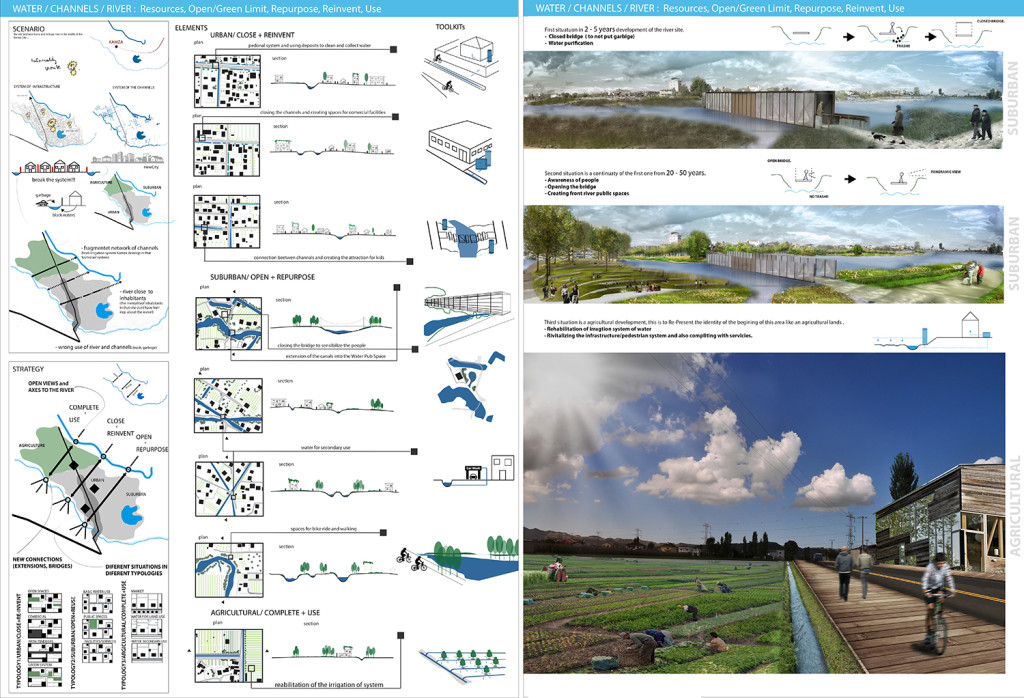
Access - Connections
Students: Kenta Haratani, Enia Salillari, Figali Dardha, Renisa Muka
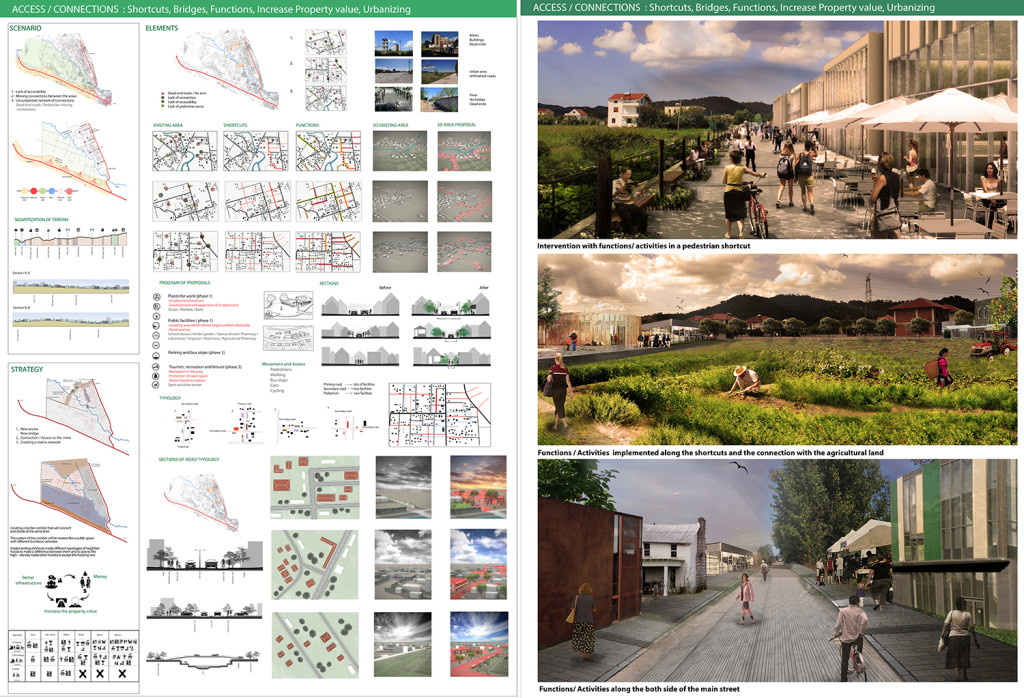
International Workshop: Infrastructure and Architecture – Viaduct Borgo Panigale in Bologna (IT)
First exchange of research between University of Ferrara Department of Architecture IDAUP and POLIS University of Tirana. December 2012.
leaded by: Prof. Antonello Stella (UNIFE), Prof. Loris Rossi (POLIS), Prof. Elvan Dajko (POLIS), Prof. Besnik Aliaj (POLIS)
Workshop Università di Ferrara UNIFE – Viadotto Borgo Panigale (Bologna) –
Il workshop internazionale svoltosi presso l’Università di Ferrara con docenti della stessa Università e docenti provenienti dall’università POLIS di Tirana: Dr. Elvan Dajko, Dr. Loris Rossi e Dr. Besnik Aliaj, ha focalizzato il tema di ricerca proponendo nuove idee progettuali per la sistemazione dello spazio in disuso al disotto del viadotto di Borgo Panigale. L’area di studio in questione si colloca trasversalmente la Via Emilia dividendo in due parti l’attuale conformazione del borgo. Come nel precedente caso, anche in quest’ultimo, il brano della città è interrotto prepotentemente dal sovrappasso della tangenziale nord di Bologna, lasciando in coincidenza del suo sedime un vuoto privo di qualsiasi funzione e identità spaziale. La naturale conformazione della città viene compromessa da quel rapporto ancora contraddetto tra città e infrastruttura. Anche se di dimensioni ridotte rispetto, al precedente caso di studio, l’area oggetto di discussione ha svolto un ruolo sostanziale dal punto di vista della ricerca in questione, soprattutto nei riguardi di tutta una serie di casi analoghi esistenti in Italia, casi ancora in discussione e non ancora risolti. Abbiamo ritenuto per questo motivo di fondamentale aiuto rafforzare i temi di ricerca, precedentemente spiegati, con problematiche che relazionano lo spazio legato al mondo infrastrutturale con quello della città consolidata.
Anche in questo caso, lo strumento operativo del workshop ha permesso un’immediata verifica progettuale da poter sviluppare e spiegare in maniera critica. I gruppi di lavoro hanno prodotto una serie di elaborati risolvendo in differenti modi l’identità perduta dell’area in questione. Le problematiche da risolvere, anche in questo caso sono state molteplici. L’enorme area racchiusa al disotto del viadotto con una larghezza trasversale di circa 50 metri è stato motivo di dibattito nell’idea di rifunzionalizzazione dello spazio ad esso pertinente. Da una prima analisi del contesto attuale, borgo Panigale non lamentava alcun tipo di assenza di funzioni legate al pubblico. Questo è stato uno dei punti chiave di questo lavoro sulla quale confrontarsi. Nella maggior parte dei casi i progetti hanno spiegato come, uno spazio così importante dall’apparente inutilità funzionale, possa diventare parte integrante della città andando a colmare quella assenza di racconto che la sovrapposizione di due mondi non ha saputo risolvere. I progetti e le idee sviluppate in questa parte dello scambio di ricerca hanno completato il precedente, spiegando come in tessuti fortemente funzionali e pianificati, quale il caso di Borgo Panigale, i vuoti urbani non conclusi da spazi infrastrutturali possano essere oggetto di ricerca e di nuove proposte progettuali come in molti esempi attualmente esistenti in Europa.
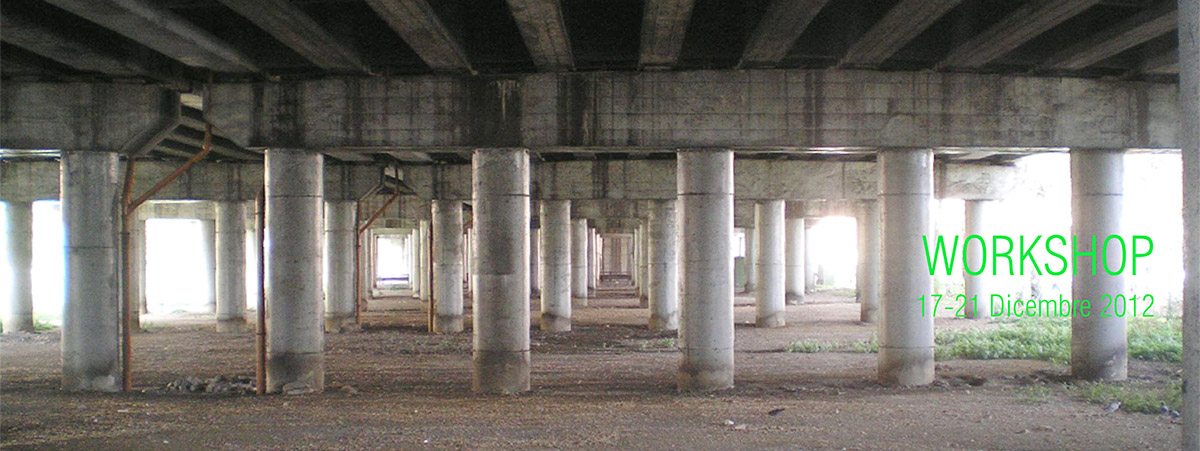
Below the projects elaborated by the students:
Stud.: Mario Lazzaroni, Giacomo Palmieri, Luca Poletti
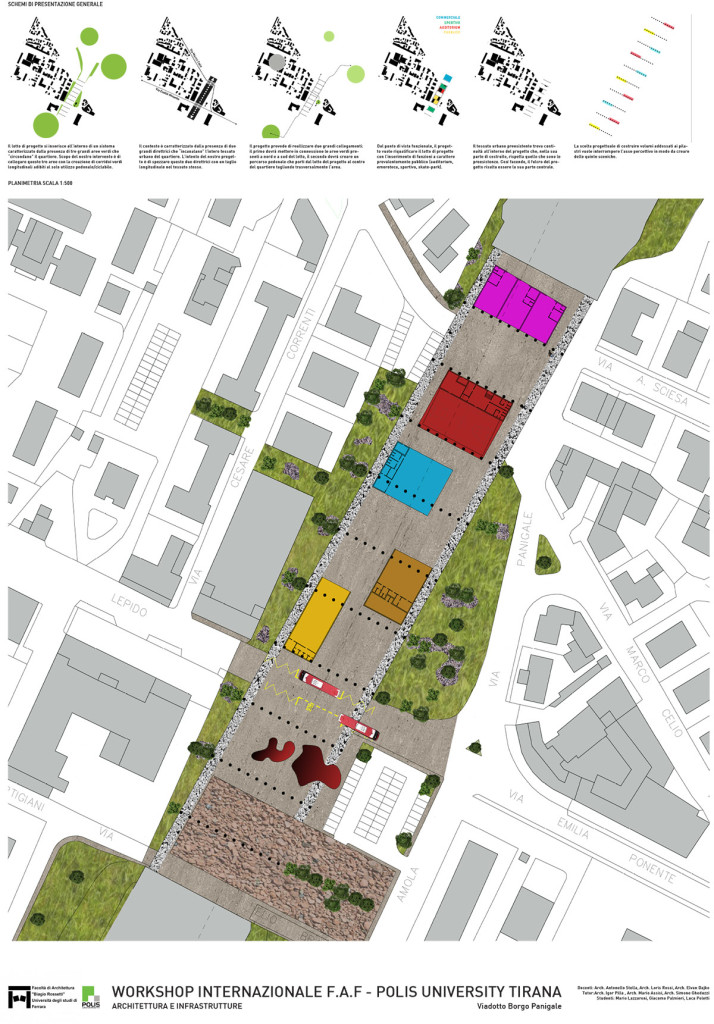
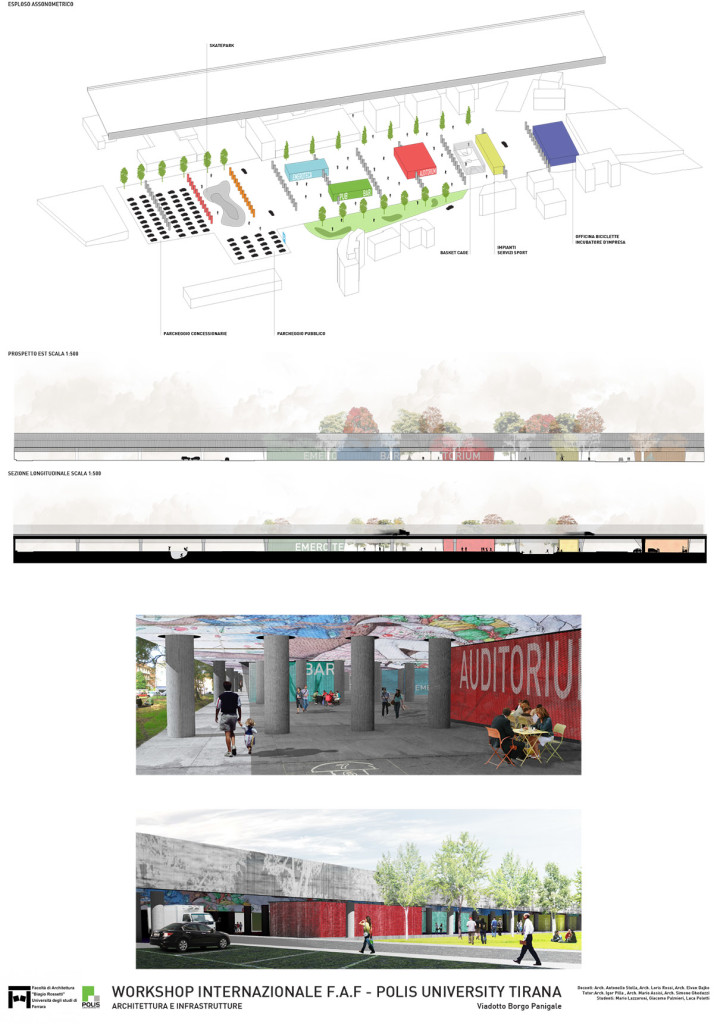
Stud.: Marco Battaglia, Carlotta Roncati, Marianna Quota
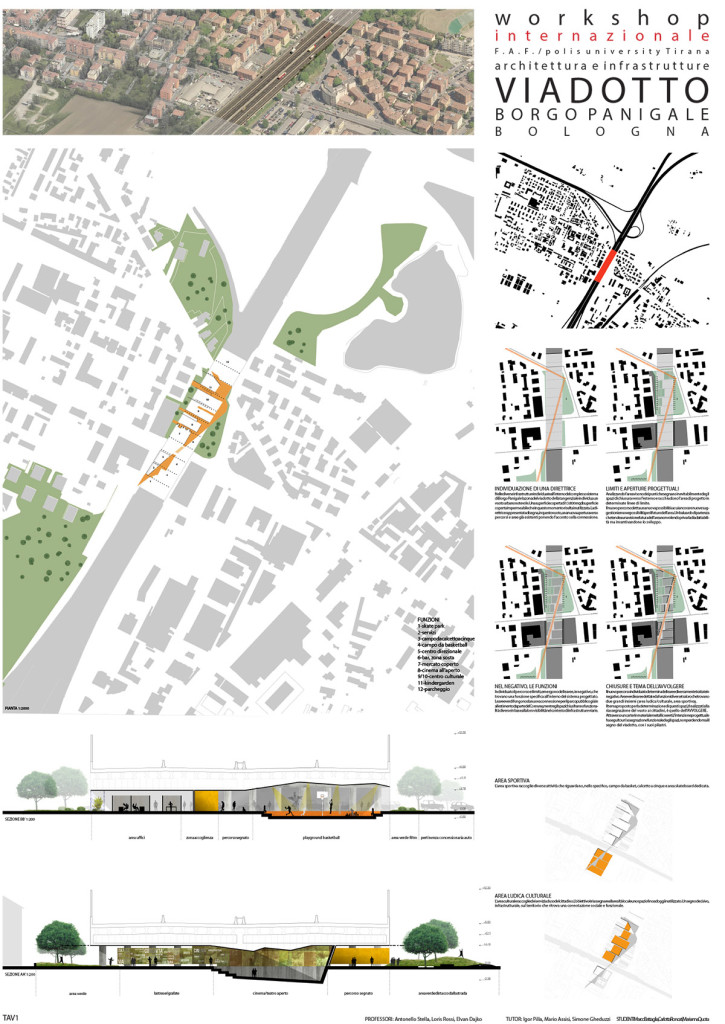
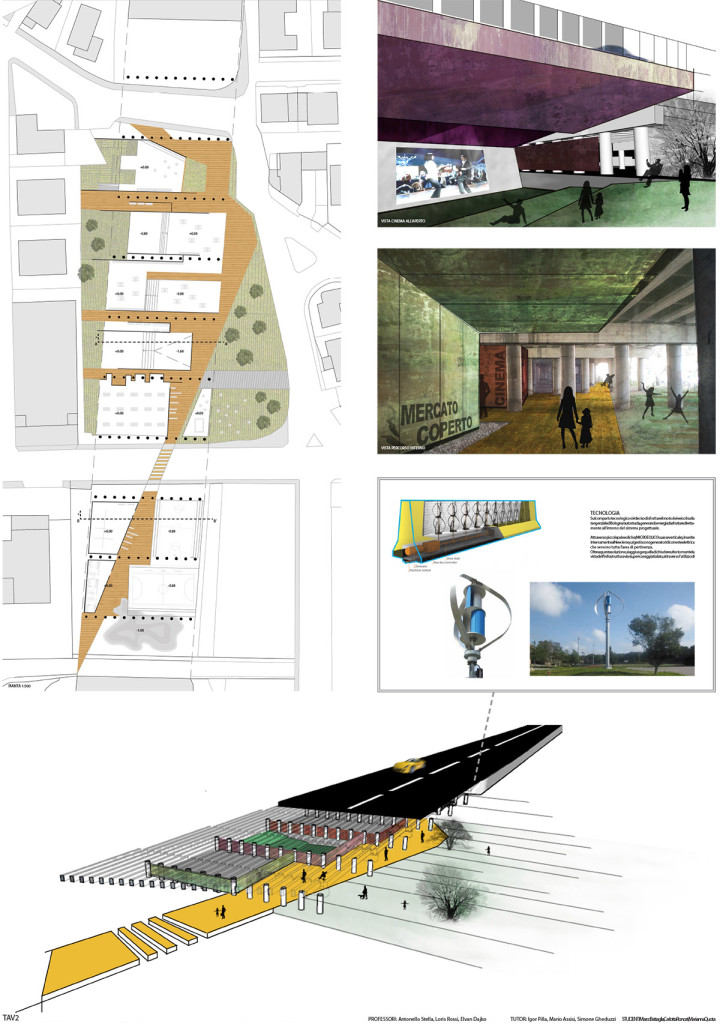
Stud.: S. Dughetti, G. Quercia, F. Tonnarelli

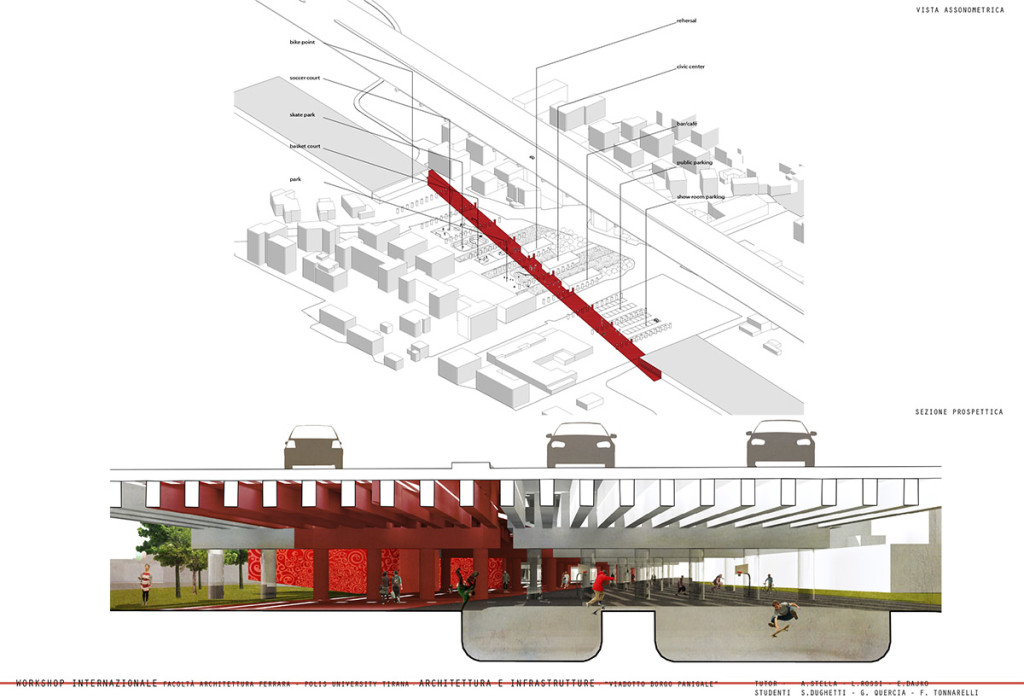
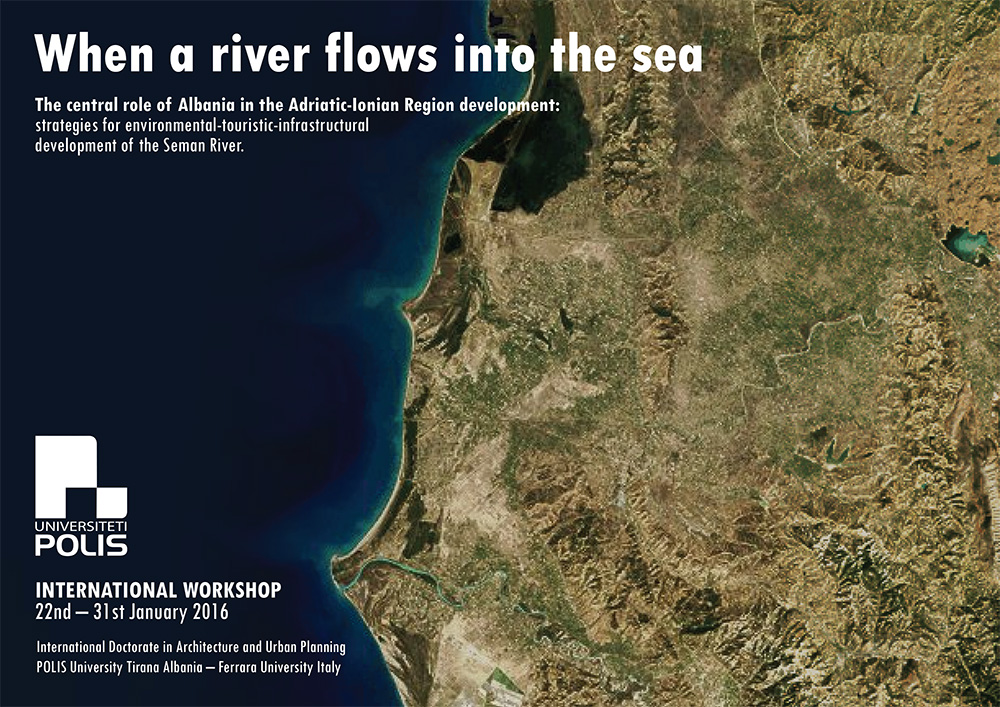
When a river flows into the sea
The central role of Albania in the Adriatic-Ionian Region development: strategies for environmental-touristic-infrastructural development of the Seman River.
Abstract
This workshop for the international PhD POLIS/Ferrara must be considered as prosecution of a broader research interest. Since last year the Albanian Government started collecting ideas trough international competitions, trying to redefine a new strategy for the Albanian Southern Coastal Area. In particular the aim of the competitions was to revitalize and reconsider all the characteristics of the Albanian coast line in terms of tourism and landscape. Later on the Albanian Government focused its interest on River basins, proposing another international competition for the area of Berat, in the specific case of Osumi River. The competition topic addressed the topic of the River itself and the Osumi Island, in terms of their capacity to be resilient in case of flooding.
Drawing inspiration from this first experience, POLIS University and the IKZH Institute, through the Observatory of the Mediterranean Basin (OMB) -a new unit involved in the applied research field -started to explore a new way of investigation the Albanian landscape, merging PhD workshops with design research topics of present interest. In the framework of the PhD activities, the workshop can be seen as an experience to improve the skills of each PhD students in terms of design approach as well as research method.
Considering the previous experience acquired with the Riviera competition, the river basin topic will give an additional contribution in relation to the broader field of investigation related to water domain in the Albanian landscape. The network created by the rivers, as study subject, can be seen as a natural system that links two different panoramas: the mountains, which constitute the central and the higher part of the nation, and the sea.
The river basins in Albania generate a large percentage of water, an important natural resource which is still not fully explored, especially in terms of biological richness and contribute to biodiversity and in terms of touristic potential. The relationship between water basins and historical landscape must be considered as an opportunity to reevaluate the role of Albanian landscape within the frame of Mediterranean culture; a space of contradictions in which different identities have marked human history.
A well know French historian, Fernand Braudel, described the Mediterranean as follows: “What is the Mediterranean? A thousand things at once. Not a single Landscape, but several landscapes. Not a single sea, but a succession of seas. Not a unique civilization, but a series of civilizations stacked one on top of the other”. This quotation highlights the importance of the Mediterranean in terms of diversity and multiplicity of identities. Through Braudel’s eyes it’s possible to go through the history of different cultures as well as traditions, in which the concept of Mediterranean Basin is seen as a common inspiration ground for all the countries that are washed by the Mediterranean Sea. Considering all the above reflections, one of the main objectives of this workshop could be the identification of some common characteristics in the riparian environment of the Mediterranean basin.
Phd students: Maria Teresa Camerada, Silvia Cesari, Artan Kacani , Pietro Massai, Alice Palazzo, Alessandro Pracucci, Enrico Porfido, Caterina Spadoni, Alberta Vandini, Alberto Verde.
